Comfort, Efficiency, Innovation, Insight


How to Fix an RV Furnace That Won’t Stay Lit
As an RV owner, ensuring your vehicle is cozy and warm, especially during colder months, is crucial. But, what happens when your RV furnace won't stay lit? This can turn…
- Written by: Elisha Lutta
- Updated on: October 11, 2023
- Topic: Heating
This post may contain affiliate links. Please read my disclosure policy .
As an RV owner, ensuring your vehicle is cozy and warm, especially during colder months, is crucial. But, what happens when your RV furnace won’t stay lit?
This can turn your comfortable RV into a chilly nightmare. But worry not. Understanding the underlying causes and knowing how to fix them can alleviate this issue, and that’s what this guide is all about.
We will delve into the causes and solutions to an RV furnace that won’t stay lit , providing you with the necessary knowledge to keep your mobile home toasty.
How Does Your RV Furnace Works?
Before diving into the troubleshooting, it’s important to grasp the basic workings of your RV furnace. At its core, an RV furnace operates similarly to a home furnace, just on a smaller scale. When you adjust your thermostat to a desired temperature, it sends a signal to the furnace.
The furnace’s control board then opens the gas valve and ignites the burner. Once the burner is lit, the furnace’s blower starts to circulate warm air throughout your RV via the duct system. An important component to note here is the sail switch, which confirms that the blower is working before the gas is ignited to prevent unburned gas from being released.
If everything is working correctly, your furnace stays lit until the interior of your RV reaches the set temperature. However, if your “RV furnace won’t stay lit,” it could be due to a range of issues, which we’ll explore in the next section.
READ: How to Fix Payne Furnace Codes 4 Flashes
Common Reasons Why an RV Furnace Won’t Stay Lit
There could be several reasons why your RV furnace won’t stay lit. Here are some of the most common:
1. Dirty or Damaged Thermocouple: The thermocouple is a safety device that senses when the burner is lit and keeps the gas line open. If it’s dirty or damaged, it may not sense the flame, causing the gas valve to close.
2. Insufficient Gas Pressure: If the pressure in your propane tank is too low, it may not be able to feed enough gas to keep the burner lit.
3. Faulty Gas Valve: A malfunctioning gas valve may not stay open, even if the thermocouple is functioning properly, interrupting the gas supply to the burner.
4. Blocked Exhaust Vents: If the furnace’s exhaust vents are blocked, it can cause the burner to go out due to a lack of oxygen.
5. Faulty Control Board: The control board regulates the sequence of operations within the furnace. If it’s defective, it could lead to a variety of issues, including a furnace that won’t stay lit.
6. Bad Thermostat : Sometimes, the problem could be as simple as a malfunctioning thermostat that’s not sending the right signals to your furnace.
This can be a frustrating and inconvenient problem, especially in cold weather. There are several possible causes and solutions for this issue, depending on the type and model of your furnace. Here are some steps that you can follow to troubleshoot and fix your RV furnace that won’t stay lit:
Step 1: Check the propane level and pressure
If your propane tank is low or empty, your furnace won’t be able to ignite or stay lit. You can check the propane level by looking at the gauge on the tank or using a propane level indicator.
You can also check the propane pressure by using a manometer or a pressure gauge. The ideal pressure for most RV furnaces is between 11 and 13 inches of water column (WC). If the pressure is too low or too high, it can affect the performance of your furnace. You may need to adjust the regulator on the tank or replace it if it is faulty . But it’s recommended to have a professional check your system’s gas pressure.
Step 2: Check the battery voltage and connections
If your battery is weak or dead, your furnace won’t be able to ignite or stay lit. You can check the battery voltage by using a multimeter or a voltmeter. The ideal voltage for most RV furnaces is between 10.5 and 13.5 volts DC. If the voltage is too low or too high, it can affect the performance of your furnace. You may need to charge or replace your battery if it is weak or dead . You should also check the battery connections and make sure they are clean and tight. Loose or corroded connections can cause intermittent or no power to your furnace .
Step 3: Check the thermostat and wiring
If your thermostat is faulty or misadjusted, your furnace won’t be able to ignite or stay lit. You can check the thermostat by setting it to a higher temperature than the ambient temperature and listening for a click sound.
If you don’t hear a click sound, your thermostat may be faulty or misadjusted. You may need to replace or recalibrate your thermostat if it is faulty or misadjusted . You should also check the wiring between the thermostat and the furnace and make sure they are not damaged or loose. Damaged or loose wiring can cause irregular or no signal to your furnace .
Also, you can inspect the Thermocouple: If the thermocouple is dirty, clean it gently with a soft cloth or a small brush. If it’s damaged, it will need to be replaced.
Step 4: Check the sail switch and limit switch
If your sail switch or limit switch is faulty or stuck, your furnace won’t be able to ignite or stay lit. The sail switch is a device that detects the airflow from the blower fan and sends a signal to the circuit board to start the ignition process.
The limit switch is a device that monitors the temperature inside the heat exchanger and shuts off the gas valve if it gets too hot. You can check the sail switch and limit switch by using a multimeter or an ohmmeter and testing for continuity. If you don’t get continuity, your sail switch or limit switch may be faulty or stuck. You may need to replace or reset your sail switch or limit switch if they are faulty or stuck .
Step 5: Check the igniter, electrode, burner, and flame sensor
If your igniter, electrode, burner, or flame sensor is dirty, damaged, misaligned, or worn out, your furnace won’t be able to ignite or stay lit. The igniter is a device that creates a spark to light the gas mixture in the burner.
The electrode is a metal rod that carries the spark from the igniter to the burner. The burner is a device that mixes air and gas and produces a flame for heating. The flame sensor is a device that detects the presence of a flame and sends a signal to the circuit board to keep the gas valve open.
You can check the igniter, electrode, burner, and flame sensor by inspecting them visually and cleaning them with compressed air or a soft brush. If you see any signs of dirt, damage, misalignment, or wear, you may need to replace them.
Clear the Exhaust Vents: Make sure the exhaust vents are clear of any debris or blockages that could prevent proper ventilation. Always switch off the furnace before doing this.
Inspect the Control Board: Look for any signs of damage or faulty wiring. If you suspect the control board is defective, consider hiring a professional to replace it.
These are some of the common steps that you can follow to troubleshoot and fix your RV furnace that won’t stay lit. However, there may be other factors that affect your furnace performance, such as altitude, humidity, wind, venting, etc.
Remember, while it’s helpful to understand these common issues and potential solutions, always prioritize safety. If you’re not confident in performing these checks or repairs yourself, it’s best to hire a professional.
READ: How to Troubleshoot Common Issues with Your Amana S-series HVAC System
Safety Precautions When Fixing an RV Furnace
Working on an RV furnace, especially when it involves gas and electricity, can be risky if you don’t take the right precautions. Here are some safety tips to keep in mind:
1. Power Off: Always switch off the power to your furnace before starting any work. This can help prevent electrical shocks.
2. Use the Correct Tools: Always use the correct tools for the task at hand. They should be in good condition and suitable for the job.
3. Wear Protective Gear: Safety glasses, gloves, and other protective gear can protect you from potential harm.
4. Follow Instructions: Always follow the manufacturer’s instructions or your RV manual when working on your furnace. If you can’t find the answer in these resources, it’s best to seek professional help.
5. Don’t Force Anything: If a component doesn’t fit or a screw doesn’t turn, don’t force it. This could lead to further damage or risk of injury.
6. Ventilate the Area: Ensure the area is well-ventilated, especially when you’re working with gas.
7. If in Doubt, Call a Professional: If you’re unsure about anything or feel uncomfortable at any point, it’s safest to call a professional.
READ: The Ultimate Guide to Goodman Furnace Problems
Tackling an issue like an RV furnace that won’t stay lit can be daunting, but with the right understanding and tools, it can often be manageable. In this guide, we’ve walked you through the basics of how your furnace works, explained common causes of this problem, and provided a step-by-step guide to troubleshooting. We’ve also highlighted the importance of safety when undertaking these tasks.
However, never forget the value of professional help. If you’re unsure at any point, don’t hesitate to call in a professional to ensure the job is done safely and correctly. Remember, taking care of your RV furnace ensures a comfortable and warm journey, no matter where the road takes you.
Elisha Lutta
HVAC aficionado, keeping temperatures just right and comfort levels off the charts. Connect with me on LinkedIn for cooling insights and follow me on Twitter for heating up the HVAC conversation. Let's create the perfect climate together!
Latest Posts
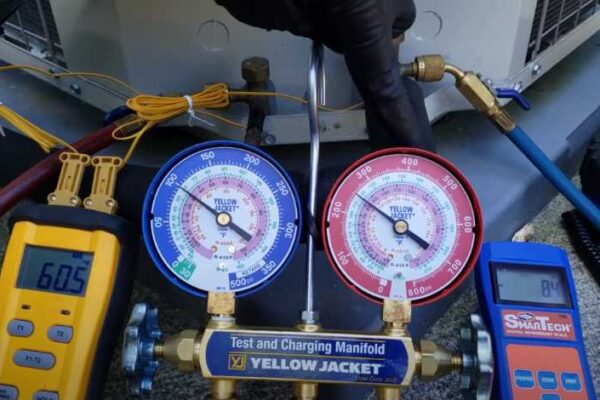
What You Need to Know About Low Side Pressure 410a and Its Impact on Your AC System
The ultimate guide to troubleshooting nest not turning on heat issues.
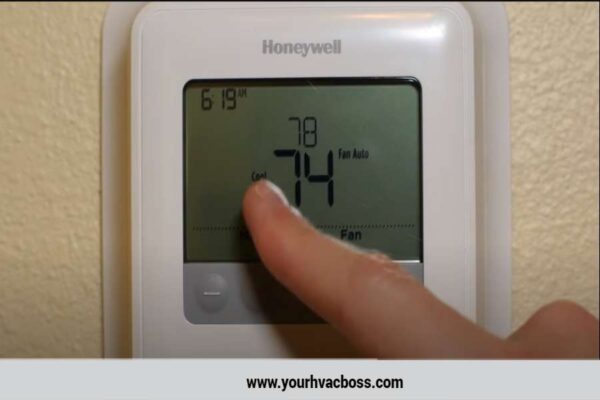
How to Fix a Thermostat Set to 74 But Reads 78: A Step-by-Step Guide

Hi there, I'm Robert Brooks
I’m so glad you are here! Welcome to my website, where I’ll share easiest HVAC troubleshooting tips, buyers guides, and everything about HVAC cooling and heating system. Learn more about me .


8 Reasons Why Your RV Furnace Won’t Stay Lit
In an RV, you enjoy exploring the world. It is conveniently packed with everything you need for a relaxing and enjoyable trip. While traveling and sleeping at night in the RV during the winter, the furnace keeps you warm.
But there are several potential causes for your RV furnace to not be functioning. You may be able to fix an inoperable RV furnace on your own, depending on the symptoms it is showing. This article intends to aid you in the procedure.
There may be one or more of the following causes for your furnace’s failure to light:
1. Issues with the propane tank
2. Issues with the propane line
3 . A burned-out thermocouple and pilot light
4. Defective thermostat
5. Airflow issues
6. Clogged drain
7. Faulty blower motor
8. Basic electrical difficulties
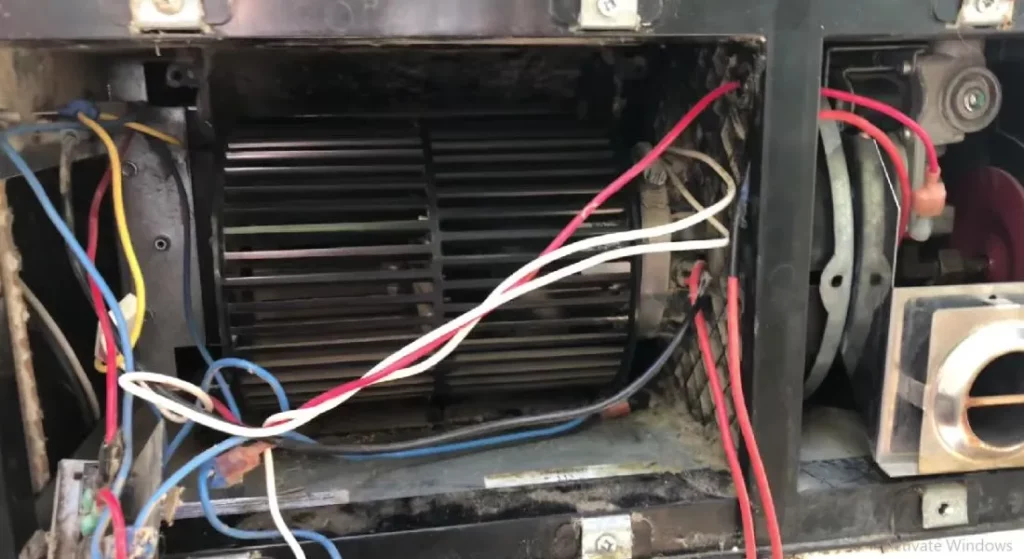
Table of Contents
Why Is My RV Furnace Not Working in My Camper?
Your RV furnace is a propane furnace or wall heater so the propane tank should be checked since it may be the primary cause of lighting failure. Of course, the valve must be opened for any hydrocarbon gas to be delivered to the heater or furnace.
However, it’s also important to keep in mind that a burned-out thermocouple and pilot light or a defective thermostat can make your furnace unlit.
1. Issues With the Propane Tank
Your furnace’s problem may have something to do with your propane tank. Natural gas problems that are frequently encountered include gas leaks, clogged gas lines, and broken gas valves.
The first step in diagnosing a problem with your propane tank or gas lines is to determine whether any gas is present.
In order to achieve this, you can start the internal propane range, switch the two-way refrigerator to propane, or turn on any other device that uses the same gas line. To check for other potential issues, make a professional phone call. At any time, if you smell gas, get out of the house and call the gas company.
Once you have an RV furnace, have a look at some of these excellent suggestions for reducing your propane consumption .
2. Issues With the Propane Line
A propane coupler can sometimes come loose in cold temperatures because the metal contracts.
Check each one to make sure it is suitably tight by taking a moment to do so.
You would detect the distinct odor of rotten eggs if there was a leak in an internal line running through the RV.
It could be more difficult to find the leak with just your nose if it is outdoors on the mainline. If at all feasible, feel for any cracks or damaged places along the line using your bare hands.
3. A Burned-out Thermocouple and Pilot Light
The thermocouple stops the gas valve to stop the gas from leaking if the pilot light goes out.
A thermocouple may have problems sensing the heat from the pilot light if it is not functioning properly. As a result, the gas valve would be randomly blocked, which could lead to the furnace going out of commission. Replace the thermocouple.
4. Defective Thermostat
The furnace may think it has achieved a set temperature when it hasn’t if the thermostat isn’t working properly.
The thermostat needs to be in heat mode for your furnace to ignite. Your furnace won’t light the burners if it isn’t. Another possibility is that the connections or sensors on the thermostat are broken.
If the issue persists, you can temporarily swap out your RV’s thermostat for a less expensive model. You must get a new thermostat if it doesn’t. If it does, you might want to seek a professional or look for other issues.
5. Air Flow Issue
Air ducts, vents, and unclean or clogged registers can restrict airflow. Because of this, the heat exchanger may overheat, closing the gas valve. This causes the furnace to overheat further, cool down, and then reignite
Cleaning or replacing the air filters will help you with ventilation issues. If the issue continues, you could want expert assistance.
6. Clogged Drain
A condensate pan that catches extra liquid that leaks from a condensing RV furnace are included with the appliance.
A sensor that immediately shuts off the furnace to minimize spillage can be activated if the drain is clogged, causing the pan to overflow with condensation.
To stop this issue from happening, use a wire to unclog the drain, or routinely empty the pan.
7. Faulty blower motor
Turn on the furnace and check to see whether hot air is coming out of the vents while it is operating. If there is no hot air flow, the motor is running on empty.
For the purpose of keeping the heat exchanger from overheating, the furnace is automatically shut off. Additionally, a frayed or damaged motor belt or fan relay are both possibilities.
You can hire an expert to address all of these motor issues.
8. Basic Electrical Difficulties
For the majority of RV propane furnaces to operate effectively, the igniter requires at least 10.5 Volts.
It’s possible that there won’t be enough spark to turn on the system or turn on the thermostat if one or two of your onboard batteries have run dangerously low or have been damaged.
Sometimes the problem is as simple as a circuit breaker tripping. Inspect the panel to make sure that the thermostat and furnace’s breakers are all in the “On” position.
You should check whether the issue is connected to a damaged or loose wire if the onboard batteries demonstrate that they are providing enough power to the system. This calls for a careful method while following wires.
Frequently Asked Questions (FAQs)
Why won’t my rv furnace light.
If the furnace is electric, then the battery may not have enough power or the furnace fuse may have blown as potential causes of the ignition failure. You may not have enough propane supply or your gas valve may not be opening when a propane or gas furnace won’t light.
What Are the Diagnostic Codes for RV Furnaces?
A diagnostic light will be present on newer RV furnaces. The circuit board provides signals that cause the diagnostic light to flash many times, each flash signifying a different code.
Can a broken wire prevent a furnace from lighting?
Your furnace will not start if a wire is damaged. The cable must be changed as the only remedy. Additionally, you can perform it on your own while traveling. Replacement furnace wire is frequently sold at truck stops and establishments that serve RVers.
Final Words
The furnace in your RV and the furnace in your house are comparable. There are many parts that can break off when used. Furnace failure can be avoided with regular maintenance, but wear and tear can occasionally result in a surprise issue.
On the RV, keep the wire and a spare battery. Also, smart ideas are additional blankets and thick drapes. Spending money on accessories like RV skirts and vent covers is OK. When the furnace breaks down when you’re out camping in the winter, you’ll be pleased you did.
Similar Posts
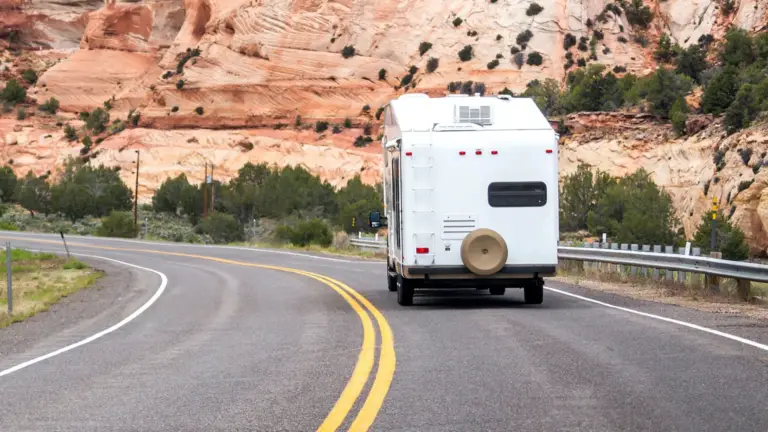
7 Aliner Camper Problems That You Should Know
Aliner campers are most popular for their drivability. You can tow them almost anywhere. This feature makes them the first choice of many adventurous campers. But as with many A-frame campers, this one too comes with different problems. Some of these are poor ventilation, no doorstop, lack of space, short bed, etc. As the saying…

5 Most Common Problems with Wolf Pup RV and Their Fixes
Wolf Pup RVs are thin and compact, making them easy to tow. Cherokee’s Wolf Pup RVs are more self-contained than other RVs in their class. Nevertheless, users’ alternatives are restricted, and they may run into difficulties with Wolf Pup RVs, which have various concerns. However, the most common problems with Wolf Pup RV are deficiency…

Common Wolf Pup 16BHS Problems You Should Know
The Wolf Pup 16BHS is a family-friendly trailer that can contain upto 5 people in a journey comfortably. This RV features a 13,500 BTU AC and 20,000 BTU furnace. Some of the most prevalent difficulties are malfunctioning trailer brakes, fast-drained battery, cracked bed frame, hard to open the door, bubbles in wallpaper, and leakage in…

6 Crossroads Zinger Problems That You Should Know
All Crossroads RVs are equipped with cutting-edge heating and cooling systems. Some will also have an internal electric fireplace heater for those cooler days or merely to keep things warm. Most are designed to function as mobile houses and should be able to withstand most weather situations. All of those RVs are well-functioned compared to…

6 Common Winnebago Solis Problems and Their Solutions
The Winnebago Solis is a class B camper RV that can adapt for you in any place. With flexible prices, Winnebago Solis is a perfectly designed RV to go for a family adventure for a while. Propane problem, shower pan leaks, pop-top canvas issue, winter issue, seal coming off, and exterior issue are the 6…

8 Winnebago Micro Minnie Problems That You Should Know
The compact size and gas-saving engine have made Winnebago a popular choice among the audience with a strained budget. But as with most other campers, it also has to deal with its fair share of the problems too. In these posts, I’ll be covering the most common Winnebago micro Minnie problems like water leaking, cheap…


RV Furnace Clicking but Not Lighting: Causes and Fixes
If you own an RV, you know how crucial a properly functioning furnace is to keep you warm and cozy during your travels. However, encountering a problem where your RV furnace clicks but fails to light can be frustrating and inconvenient. In this article, we will explore the common causes behind this issue and provide you with troubleshooting steps and DIY fixes to get your furnace back up and running.
Understanding the RV Furnace
Before we dive into the causes and fixes, it’s important to understand how an RV furnace works. An RV furnace is typically a propane-powered forced-air system that heats the interior of your RV. When you turn on your furnace, the thermostat signals the furnace to turn on. The furnace then goes through a sequence of steps to ignite the propane and heat the RV.
Causes of RV Furnace Clicking but Not Lighting
Lack of propane.
One of the most common causes of an RV furnace clicking but not lighting is a lack of propane. Propane is the fuel that powers the furnace, and if the propane tank is empty or low, the furnace won’t ignite. Check your propane tank to make sure it’s not empty, and if it’s low, refill it.
Dirty Burner or Igniter
Another common cause of an RV furnace clicking but not lighting is a dirty burner or igniter. Over time, the burner and igniter can become dirty, which can prevent the furnace from igniting. To fix this issue, you’ll need to clean the burner and igniter. Refer to your RV owner’s manual for instructions on how to do this.
Faulty Thermocouple
The thermocouple is a safety device that shuts off the propane if the flame goes out. If the thermocouple is faulty, it can prevent the furnace from igniting. To fix this issue, you’ll need to replace the thermocouple. Refer to your RV owner’s manual for instructions on how to do this.
If the furnace clicks but doesn’t light, it’s possible that a fuse has blown. Check the furnace’s circuit breaker or fuse box to see if a fuse has blown. If it has, replace the fuse with a new one.
Bad Control Board
Finally, a bad control board can cause an RV furnace to click but not light. The control board is responsible for controlling the furnace’s ignition sequence, and if it’s faulty, it can prevent the furnace from igniting. To fix this issue, you’ll need to replace the control board.
Fixes for RV Furnace Clicking but Not Lighting
Check propane supply.
If your RV furnace is clicking but not lighting, the first thing you should do is check your propane supply. Make sure the propane tank is not empty and, if it’s low, refill it. Also, check the propane regulator to make sure it’s not faulty.
Clean Burner and Igniter
If your RV furnace has a dirty burner or igniter, it may not ignite properly. To fix this issue, you’ll need to clean the burner and igniter. Refer to your RV owner’s manual for instructions on how to do this.
Replace the Thermocouple
If the thermocouple is faulty, it will need to be replaced. Refer to your RV owner’s manual for instructions on how to do this. Once the thermocouple has been replaced, your furnace should ignite properly.
Replace Blown Fuse
If a fuse has blown, you’ll need to replace it with a new one. Check the furnace’s circuit breaker or fuse box to see if a fuse has blown. If it has, replace the fuse with a new one.
Replace Control Board
If the control board is faulty, it will need to be replaced
. This is a more advanced repair, and if you’re not comfortable doing it yourself, it’s best to contact a professional RV technician.
DIY Fixes and Maintenance Tips
In addition to troubleshooting, performing some DIY fixes and regular maintenance can help prevent the clicking issue and keep your RV furnace in optimal condition. Here are a few tips:
- Cleaning the Furnace Components : Regularly clean the furnace components, including the burner assembly, igniter, and flame sensor, to remove any dirt, debris, or rust. This ensures proper functioning and ignition.
- Replacing Faulty Parts : If you discover any damaged or worn-out components during troubleshooting or maintenance, replace them promptly. This includes the igniter, electrode, flame sensor, or blower motor, if necessary.
- Regular Furnace Maintenance Practices : Follow the manufacturer’s recommendations for routine maintenance, such as lubricating moving parts, inspecting electrical connections, and checking for gas leaks. Regular maintenance can help identify and prevent potential issues before they escalate.
When to Seek Professional Help
While many clicking issues can be resolved through troubleshooting and DIY fixes, some problems may require professional expertise. Consider seeking professional help in the following situations:
A. Complex issues beyond DIY repair:
There are certain situations where RV furnace problems may go beyond what you can handle as a do-it-yourself (DIY) project. If you encounter complex issues with your RV furnace that exceed your knowledge, skills, or available resources, it’s advisable to seek professional help. These complex issues may include major mechanical failures, electrical problems, or issues with specialized components.
Attempting to fix complex problems without the necessary expertise can potentially worsen the situation or even cause safety hazards. It’s crucial to recognize your limitations and know when it’s time to involve a professional.
B. Importance of professional expertise:
Professional RV furnace technicians possess the necessary knowledge, training, and experience to diagnose and repair complex issues effectively. They are familiar with the various furnace models, their components, and troubleshooting techniques specific to RV heating systems. Their expertise ensures that the repair work is done correctly and reduces the risk of further damage.
Professional technicians also have access to specialized tools and equipment that may be required for diagnosing and fixing complex furnace problems. Their expertise allows them to identify the root cause of the issue and provide appropriate solutions, ensuring the safe and efficient functioning of your RV furnace.
C. Contacting an RV furnace technician:
When you encounter complex issues with your RV furnace, it’s recommended to contact a qualified RV furnace technician. Here are some steps you can take to find a reputable professional:
- Research: Look for certified RV furnace technicians or HVAC (Heating, Ventilation, and Air Conditioning) specialists who have experience working with RV heating systems. You can check online directories, ask for recommendations from fellow RV owners, or contact local RV service centers for referrals.
- Verify credentials: Ensure that the technician you plan to hire is properly licensed, insured, and certified. These credentials indicate that they have met the necessary requirements and possess the required expertise to handle RV furnace repairs.
- Seek estimates: Contact multiple technicians and request estimates for the repair work. This allows you to compare prices and services offered. However, keep in mind that the cheapest option may not always be the best choice. Consider the technician’s reputation, experience, and customer reviews in addition to the cost.
- Schedule an appointment: Once you have chosen a technician, schedule an appointment to have your RV furnace inspected and repaired. Make sure to provide them with detailed information about the problem you’re experiencing and any relevant details about your RV’s furnace system.
Remember, timely and professional intervention can help you avoid further damage and ensure the safe operation of your RV furnace.
Dealing with an RV furnace that clicks but doesn’t light can be a frustrating experience, especially when you’re out on the road. However, by understanding the possible causes and following the appropriate fixes, you can get your furnace up and running again. Remember to check your propane supply, clean the burner and igniter, replace the thermocouple if necessary, replace blown fuses, and consider replacing the control board if all else fails. By taking these steps, you’ll increase the chances of having a warm and comfortable RV.
FAQs (Frequently Asked Questions)
1. Why is my RV furnace clicking but not igniting?
If your RV furnace is clicking but not igniting, it could be due to a lack of propane, a dirty burner or igniter, a faulty thermocouple, a blown fuse, or a bad control board.
2. How do I check if my propane tank is empty?
To check if your propane tank is empty, pour warm water down the side of the tank and feel for a cold spot. If the tank feels cold, it likely contains propane. Alternatively, you can use a propane tank gauge or consult a professional.
3. Can I clean the burner and ignite it myself?
Yes, you can clean the burner and ignite it yourself. Refer to your RV owner’s manual for instructions on how to do this properly.
4. Can a blown fuse cause the furnace to click but not light?
Yes, a blown fuse can prevent the furnace from lighting. Check the furnace’s circuit breaker or fuse box to see if a fuse has blown and replace it if necessary.
5. How much does it cost to replace a control board in an RV furnace?
The cost of replacing a control board in an RV furnace can vary depending on the make and model of your RV. It’s best to contact a professional RV technician for an accurate cost estimate.
Hi I’m Joiel Borid Creators of RV Outsider. Wild Life’s first camping was started when I’m 8 years old, at the Home Front Yard. Moto of RV Outsider shares my experience, expertise, and knowledge that I learned, and apprises about my next journey. So stay tuned with RV Outsider.
Leave a Comment Cancel reply
Save my name, email, and website in this browser for the next time I comment.


RV Furnace Clicking But Not Lighting: Troubleshooting Giude How to Fix the Issue
Does the RV furnace clicking but not lighting sound familiar? Don’t worry, this is a common problem in vehicles. You turn your device on and hear the blower running, but it never lights, and then the blower eventually turns off.
This does not mean you need a new furnace since you can fix the problem yourself. I have experienced it several times on my RVing adventures so will help you to troubleshoot the issue.
In this article, I will look at how RV furnaces work, the reasons for the furnace sparking but not lighting, and ways of solving the problem. Join me, and let’s start learning!

Table of Contents
How Does an RV Furnace Work?
An RV propane furnace is a forced-hot-air system that uses a propane supply or electricity and several furnace components to function. Here is a step-by-step process of how this furnace works:
- Thermostat Activation: Whenever the thermostat detects temperatures lower than the initially set point, it signals the furnace to begin working.
- Blower Motor Activation: The blower motor will initiate and run for about 15 to 30 seconds to eliminate any combustible materials from the combustion chamber.
- Sail Switch Engagement: The furnace fan will then activate the sail switch, which signals the release of propane into the combustion chamber.
- Ignition: An electric ignitor generates a spark, which ignites the propane in the burn chamber and a flame sensor will detect flames in the chamber.
- Heat Generation: The furnace then heats up, and if the temperature level remains within limits, it will continue operating.
- High Limit Switch: When temperatures become too high, the high switch limit will be triggered, which cuts off the fuel supply to ensure safety.
- Propane Supply: The regulator will supply a consistent flow of propane or electricity if there is enough power or gas supply.
- Heat Exchanger Operation: The heat exchanger on the furnace warms the air while the RV furnace blower fan circulates the hot air throughout the RV.
- Thermostat Shutdown Signal: When the thermostat attains the desired temperature, it signals the shutting off of the furnace and enters the “cool down” cycle. During this cycle, the blower fan continues running but will be blowing cold air .
- Electricity or Propane Cut-Off: The furnace stops the electricity or gas supply and goes into a shutdown mode.
Reasons Why RV Furnace Clicking But Not Lighting
I’ve found myself shivering in my RV despite the furnace being turned on, and I know the frustrations of a furnace that clicks but doesn’t ignite. Identifying the exact problem is easy if you know whether your furnace uses gas or electricity. Some of the reasons why an camping vehicle’s furnace may not light include the following:
- Inadequate power supply;
- Faulty propane tanks or lines;
- Electrical wiring issues;
- Burned thermocouple;
- Airflow issues due to propane pressure lock failure;
- A malfunctioning relay for the Blower Motor;
- Sail switch failure;
- Bad gas valve ;
- Ignitor failure;
- Damaged control board;
- Dirty or blocked outside exhaust vent;
- Incomplete combustion;
- Dirty or clogged air return grill;
- Broken or misaligned metal arms.
When the RV furnace doesn’t light, your recreational vehicle will automatically turn it off as a safety measure. You can usually troubleshoot and fix the issue without taking the RV to the repair shop. Keep reading as I take you through everything you need to know about your RV furnace clicking but still not lighting.

Troubleshooting RV Furnace Problems
There could be several reasons your RV furnace isn’t producing heat whenever you turn up the thermostat. Let’s quickly look at the common causes and how to troubleshoot them:
1. Check the Power Button
RV furnaces powered by electricity or a propane supply will both have a power switch. Therefore, when experiencing issues with my furnace, the first step I take is to ensure this power button is switched on.
In addition, I also analyzed the breaker to confirm if the furnace’s power had tripped, and reassembled it. However, if I notice the tripping persists after reassembling, I always call a professional to examine my furnace.
2. Check If You Have Adequate Gas or Battery Power
I discovered that my RV furnace will only ignite if it’s getting adequate electrical power or propane gas supply. For a gas furnace , I always ensure there is plenty of gas inside the tank and refill it if it’s empty. In addition, I make sure the propane tank valve is also open, and if it’s closed, I open it and wait for a few minutes before starting the furnace again.

Like mine, most electrical furnaces require a 10.5 V power supply to run efficiently. I use a multimeter to look at the output of my RV battery and determine whether the furnace is getting adequate voltage to ignite. Whenever necessary, I substitute the battery and attempt to ignite the furnace again.
3. Check the Thermostat
When using my RV, I set my thermostat at a higher temperature compared to the ambient temperature. Usually, some furnace or flame sensors must detect a lower temperature before turning on the furnace. I switch on the furnace blower to force the furnace to generate heat.

4. Check the Gas Line
In my experience with RV gas furnaces, consistent gas supply is one major factor that guarantees smooth operation. I always make it a point to confirm my gas line is undamaged and clear, ensuring there is reliable gas flow to the furnace.
If I encounter any signs of potential leaks or gas pressure-related issues, I immediately prioritize safety– evacuating the entire RV and consulting professionals for support.
5. Check for Fuse
Inspecting the fuse is crucial in troubleshooting RV furnace problems. When the fuse is blown, it usually manifests as black smoke between the DC supply and the circuit board. This incident interrupts the RV’s battery supply, causing ignition failure.

If you encounter a blown fuse or suspect any fuse issues, your go-to action is replacing it. However, if your fuse is burning out consistently, you should immediately consult an electrician.
6. Check the Ignitor Itself
One of the common culprits hindering the RV furnace from igniting is the metal arms found inside the ignitor. The camper’s furnace will fail to ignite if these arms are either broken or damaged.
I usually examine the gap existing between the metal arms to ensure it’s not too small or too wide since the gap should be approximately ⅛” an inch. In my experience, if the gap is off, replacing the ignitor is necessary.
7. Cold Weather
Facing issues with an RV furnace that refuses to light, especially in the cold weather, is a situation I’ve faced during my RV travels . It’s frustrating when cold temperatures affect the gas flow to the furnace. I’ve discovered that a simple yet effective solution is pouring a small quantity of hot water on the regulator to warm it up and facilitate a smoother gas flow.
It’s a simple solution born out of trial and error, guaranteeing a warmer and more comfortable journey on the road during those pretty cold nights.
8. Check Vents
Experiencing issues with my camper furnace has taught me to consider different factors, and one common problem is blocked air vents. Several instances have occurred, especially after leaving my RV in storage, where these vents were clogged. So, it’s now my routine to check these vents whenever the furnace is not working.

If the vents are blocked, clearing them is all it takes to get my furnace operational again. It’s a lesson I have learned from my RVing experiences, guaranteeing a more enjoyable and smoother experience without issues with the heating system.
9. Sail Switch
Through personal experiences, I’ve learned that if the sail switch is not functioning properly, the furnace will not ignite. The RV sail switch depends on the blower fan to thrust a thin metal piece, completing the electrical circuit and allowing the opening of the propane valve. However, issues such as pet fur and lint blocking the sail switch may affect this process.
Cleaning the sail switch is usually a quick fix for me; however, there are situations where taking the furnace out for a more thorough analysis becomes necessary. These practical experiences have equipped me to handle sail switch-related issues and ensure my furnace is always running smoothly.
10. Limit Switch
The limit switch is a vigilant protector that senses an overheating situation and quickly trips to prevent mishaps. Even if the switch works, it will eventually shut off after some time. After experiencing this situation a few times, I learned this can happen because of a dirty furnace and blocked ducts.
Since then, my winter rituals have become preventative care and regular cleaning of the furnace and ducks. Although the limit switch was once a mysterious component, it now serves as a reminder of how a little maintenance and attention can ensure a comfortable and uninterrupted RVing adventure.
Best Alternatives for Furnace
Now, I am going to share a couple of the best heaters that will enhance your RV experience even in cold temperatures.
1. Mr. Portable RV Propane Heater
Mr. Portable RV gas Heater allows you to heat your RV, picnic area, garage, and more with its customized heat settings that range from low, to medium, and high. In addition, it gives off 4,000, 9,000, or 18,000 BTU per hour, and its heat ranges from 450 square feet and can last for 1.8 hours on high and 3.6 hours on low.
2. Xtreme RV Heater
X-treme RV Heater is designed to keep your RVs, cabin, boat, and other small spaces cozy and comfortable. The heater’s 750/1500 Watts heat settings allow you to warm your space and maintain comfortable temperatures quickly.
Overview of People’s Experience with RV Furnace Clicking But Not Lighting
Most RV owners had positive experiences in troubleshooting and solving issues with the RV furnace sparking but not lighting. Below, I will share a few customer reviews:
Frequently Asked Questions
Why is my rv furnace sparking but not lighting.
The sparking is usually caused by the RV’s furnace spark igniter as it attempts to flare up the pilot burners or light. When there is a system malfunction, there will be repetitive Sparking. This can be problematic if you lose heat at some point during the freezing winter months.
Why Is My Furnace Turning On But Not Igniting?
If your gas or electricity furnace initiates the cycle but never fires up, it’s likely because of a dirty or faulty sensor, Inadequate power supply, or a faulty propane tank or line. Additionally, it can be due to airflow issues, damaged gas valves, malfunctioning control boards, sail switch failure, or misaligned or broken metal arms.
Where Can I Find The Furnace Fuse?
The fuse is likely found in the control box closer to the blower for furnaces with a fuse. If you cannot see it, your transformer is likely burnt out and needs replacement. Once you find the fuse, inspect all wires to determine if they are discolored or damaged.
How Long Does A Furnace Last In An RV?
A 20-pound propane tank will power an RV furnace for approximately three hours of uninterrupted operation. However, the furnace does not run continually but only operates for a few minutes, usually every two to three hours, to maintain the temperature.
These are common causes and fixes when your RV furnace clicking but not lighting . If you are comfortable dealing with appliances, you can diagnose or fix the problem yourself. However, you may need to call an RV technician or take your vehicle to the repair shop for professional services.
Knowing the functionalities of your RV will give you the confidence you need to head out on your camping adventures. If you must fix a problem, furnace replacement parts are affordable and widely available. In addition, there is a lot of information available that will give you the knowledge to diagnose and fix problems with your furnace.
Have you ever had your RV furnace clicking and sparking but not lighting? Please share your experiences in the comment section below.

I`m a current Law Enforcement Officer working within the Counterterrorism Bureau in New York State. I have been Camping for over 20 years. My styles of camping include tent, car, truck, van, and RV travel trailer. I have a YouTube channel where I teach all types of camping with an entertaining method: https://youtube.com/@TheSmallsRVAdventures
Similar Posts

Newmar RV Problems: 2023 Best Troubleshooting Guide
Are you tired of your Newmar RV problems opening up every other day? Don’t worry, this article has got your back. Here, I will mention some of the most accessible solutions to driving stability: inefficient headlights, faulty equipment, cheap carpeting, slide-out damage, and squeaking sound issues related to the Newmar RV. Moreover, you can also…

3 MOR Ryde Pin Box Problems: In-Depth Troubleshooting Guide
Are you experiencing MOR Ryde Pin Box Problems? As an RV owner, the last thing you want is to face unexpected issues while on the road. In this article, we’ll discuss three common complications with MORyde pin boxes and provide information to fix them. Also, we’ll cover devices making sounds when turning, installation problems, and…

RV Refrigerator Not Cooling But Freezer Is: Troubleshooting
If you don’t know why your RV refrigerator not cooling but the freezer is, don’t worry. With more than 7 years of experience in the RV industry, I’m here to guide you. Read on as I’ll discuss the 6 common reasons behind this problem along with their fixes to get back the performance of RV…

Cherokee Grey Wolf Problems: 2023 Easy Solutions Guide
You have probably encountered Cherokee Grey Wolf Problems if you’re an outdoors person who would prefer RV camping over sleeping in a tent. This camping vehicle from Forest River has innovative features similar to Arctic Fox with a great interior. Let’s look at the ultimate guide with problems and quick-fix measures that can save you from frequent repair shop visits. Cherokee Grey Wolf…

How To Fix RV Battery Disconnect Switch Problems: 2023 Solutions Guide
As an avid RV enthusiast who relies on my RV battery system, I know firsthand how frustrating it can be when you have RV battery disconnect switch problems. I’ve dealt with my fair share of issues over the years – from corroded terminals to faulty switches that fail to connect or disconnect the batteries properly….

Generac IQ2000 Problems: 5 Parameters for Gas Consumption Revealed
Generac IQ2000 Problems are a common concern among users who rely on this portable generator for power backup during emergencies, outdoor events, or camping trips. One of the major issues reported by users is the generator’s gas consumption, which can lead to a shorter runtime and increased costs. In this article, we will discuss five…

When you buy through our links, we may earn a commission. Learn more .
Why Won’t My RV Furnace Stay Lit?
Table of Contents show Question Answer Related
A fellow RV was having some issues with their RV furnace. Here’s their comment from our 7 Signs That Your RV Propane Regulator Has Gone Bad article.
Sf 30 suburban heater running thru the (3) cycles. But won’t stay lit. Took it out only drew blood 3 times. Took it to an RV service center. They hooked it up on the bench and it runs like it’s supposed to. They suggested a new thermostat. Brought it back and reinstalled it did not hook it up to the thermostat just wired the blue wires together like they had on the bench, and hooked up the propane line (tank is 1/2 full) . It lights like before and won’t stay lit. Propane stove all burners on works fine flame looks good, fridge works fine. Do you think it’s the regulator? Two days down and still not fixed! -RH
We had that exact same problem with our RV furnace not too long ago. If everything else is working the regulator is probably fine.
The thing that worked for us is we removed the metal thing that was covering the exhaust pipe from the furnace on the outside of the RV.
We also checked inside the exhaust pipe to make sure nothing is inside of it like a wasp nest.
Then we made sure all of the floor vents were open and didn’t have anything covering them.
RV furnaces have sensors in them that will shut off the furnace if there isn’t enough airflow, it stops the furnace from overheating or something like that.
For some reason taking off that outer metal cover and keeping the inside floor vents open and unobstructed has fixed the problem.
The furnace hasn’t turned off prematurely since.
I would try uncovering the vents and the exhaust pipe first and then maybe changing the propane regulator if that doesn’t fix it.
If removing the metal piece on the outside of the RV works you can get an insect cover like this (click to view on Amazon) to replace the metal cover (we use the same one).
It doesn’t restrict the airflow as much and it will stop wasps from getting into your RV.
- How Long Will An RV Battery Run The Furnace? + Calculations
- Is It Ok To Leave The RV Fridge On Propane While Driving?
- What Does Oil In An RV Propane Regulator Mean? + How To Fix
- 6 Best Diesel Heaters For Campers, RVs & Vans
- Best Small Portable Propane Heater For Indoor & RV Use
Have any questions about this RV issue? Leave a comment below.
Leave a Comment Cancel reply
How to Solve Common RV Furnace Issues: RV Troubleshooting
By Brenda Puckett & Roadtrippers
Although the RV furnace uses one of the simplest technology systems in a rig, it can be a hassle to repair. Luckily, there are a few things owners can do to stay on top of furnace maintenance and ensure that your RV stays at a comfortable temperature, especially when camping in colder weather.
There are a few different types of heaters used inside RVs, like hydronic heat (mini boiler system) and catalytic heaters (or space heaters), but most rigs typically have a forced air furnace. This propane-fueled system also uses 12-volt DC from the coach battery to operate the thermostat and the blower fans.

Free Course: RV Maintenance Made Easy
The appliance itself is typically not visible. It’s usually located behind a wall with the only visible elements being the return air vent (located in the interior) and the intake/exhaust vent on the exterior of the RV.
RV furnace issues range from the pilot not lighting to blowing out cold air. Let’s take a look at a few common problems and troubleshooting solutions for your furnace.
Troubleshooting: The Furnace Shuts Off Within 30 Seconds
The return air compartment doesn’t have a filter and is often located under the refrigerator or someplace low to the floor—this allows dust, food, and debris to get into that area. This can cause an important component called the “sail switch” to get dirty, preventing it from sending a signal to the furnace system that conditions are safe to ignite the propane.
This is a problem that requires an RV technician to remedy. You can help prevent this issue by vacuuming the return area once per month (or more during cold weather season).
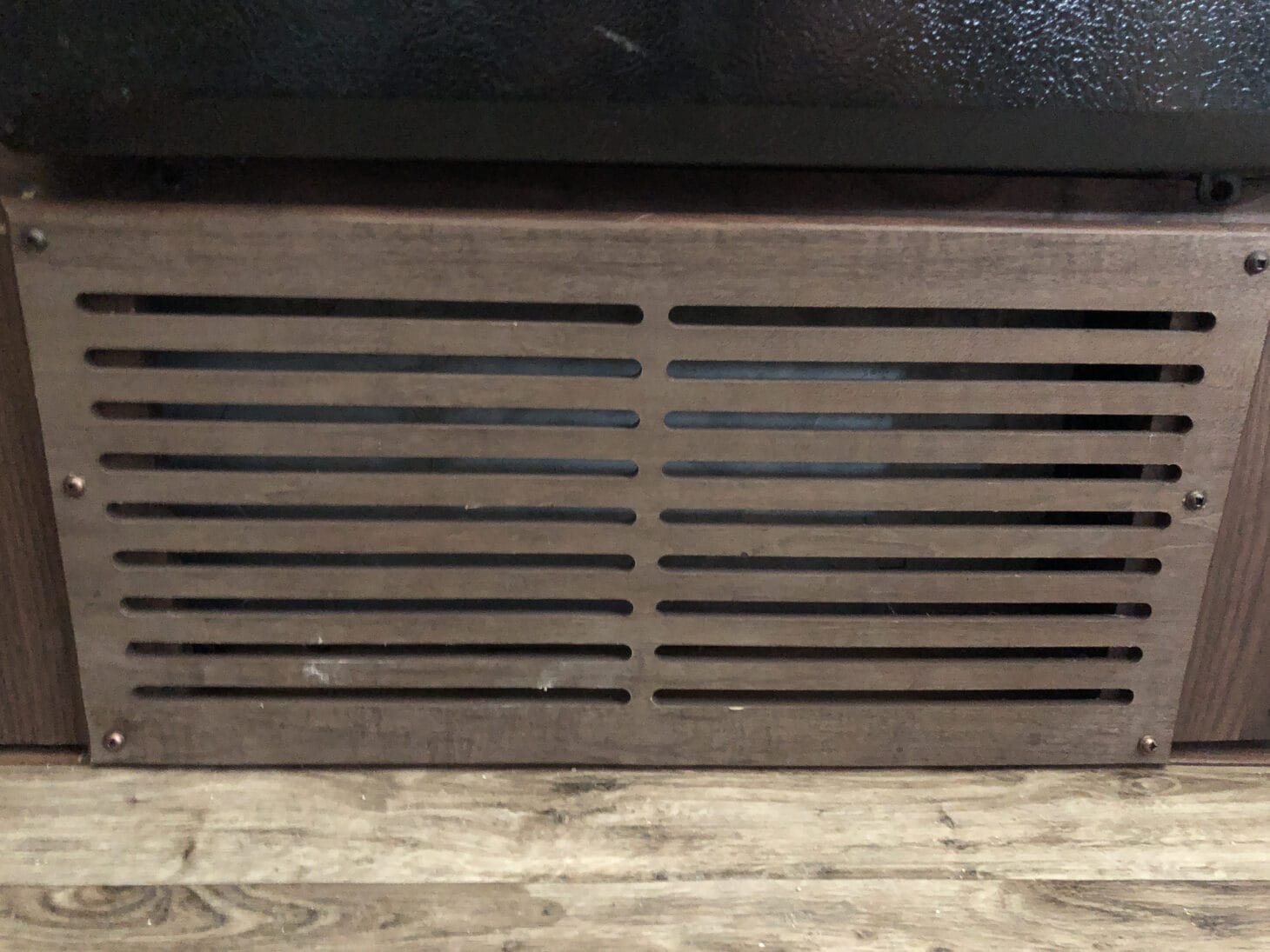
Troubleshooting: The Furnace Doesn’t Turn on After Setting the Thermostat
Believe it or not, this can be as simple as adjusting the setting on the thermostat. Make sure that it’s set to “Heat” or “Furnace.” Next—remember that the thermostat operates from the 12-volt DC coach battery—ensure that your battery is fully charged and then check the 12-volt fuse panel to make sure the furnace fuse isn’t blown.
There could be a few other issues that cause the furnace to not kick on that need to be addressed by an RV technician, including loose wiring connections and circuit board problems.
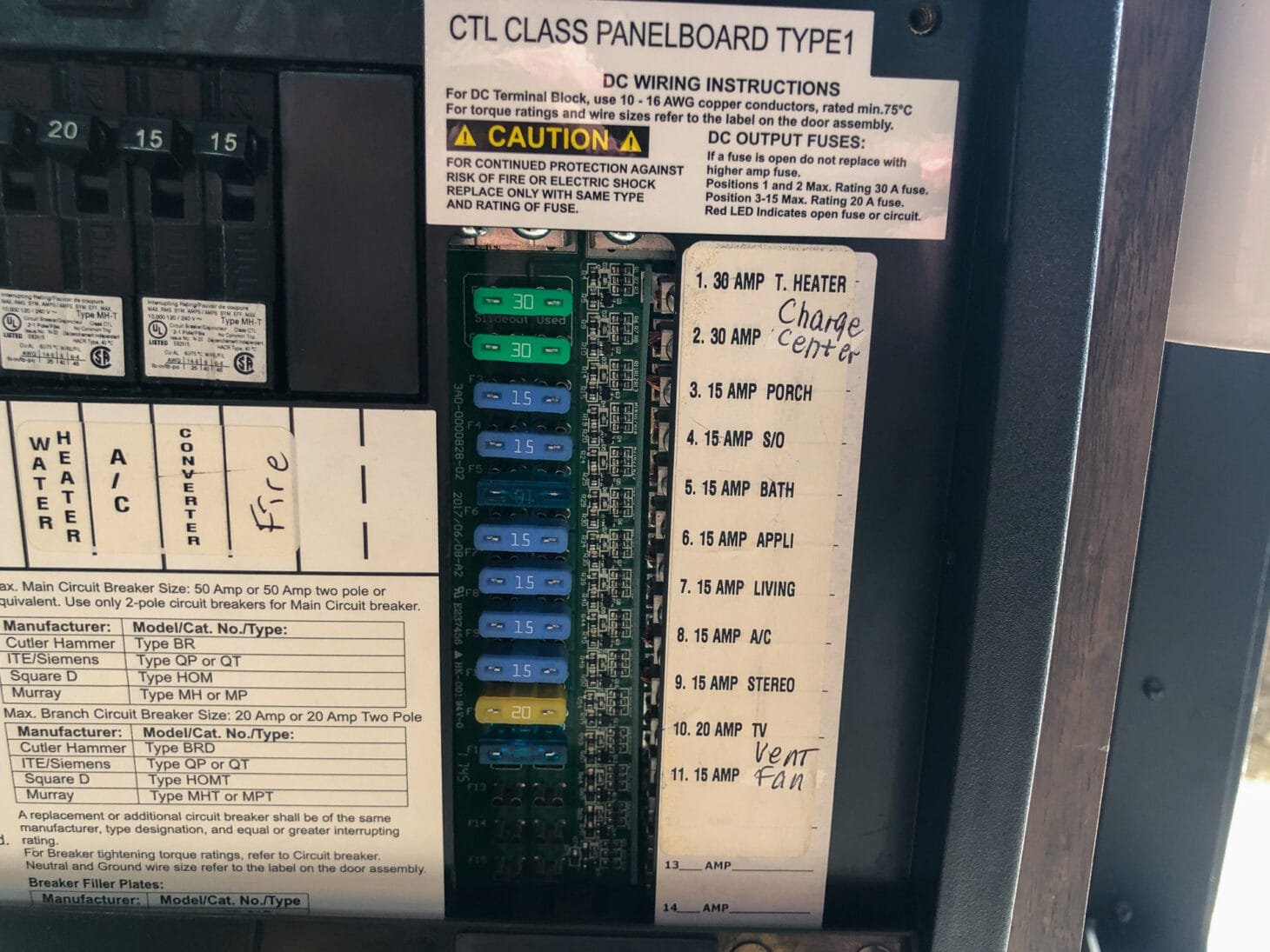
Troubleshooting: The Furnace Blows Cold Air
Because the furnace utilizes propane as its fuel source, there are several safety features that are enacted before the system fires up. A blower fan must reach a minimum number of cubic feet per minute (CFMs) before telling the propane ignition process to begin. You’ll feel cold air blowing during this initial procedure. Cold air also blows at the end of the cycle for about 45 to 90 seconds (sometimes up to 5 minutes) while the fan purges the system. Have patience and understand that this is normal.
Your furnace also has a high-temperature limit switch to cool down the burn chamber. Air isn’t necessarily cold during this time, but it might not be as hot.
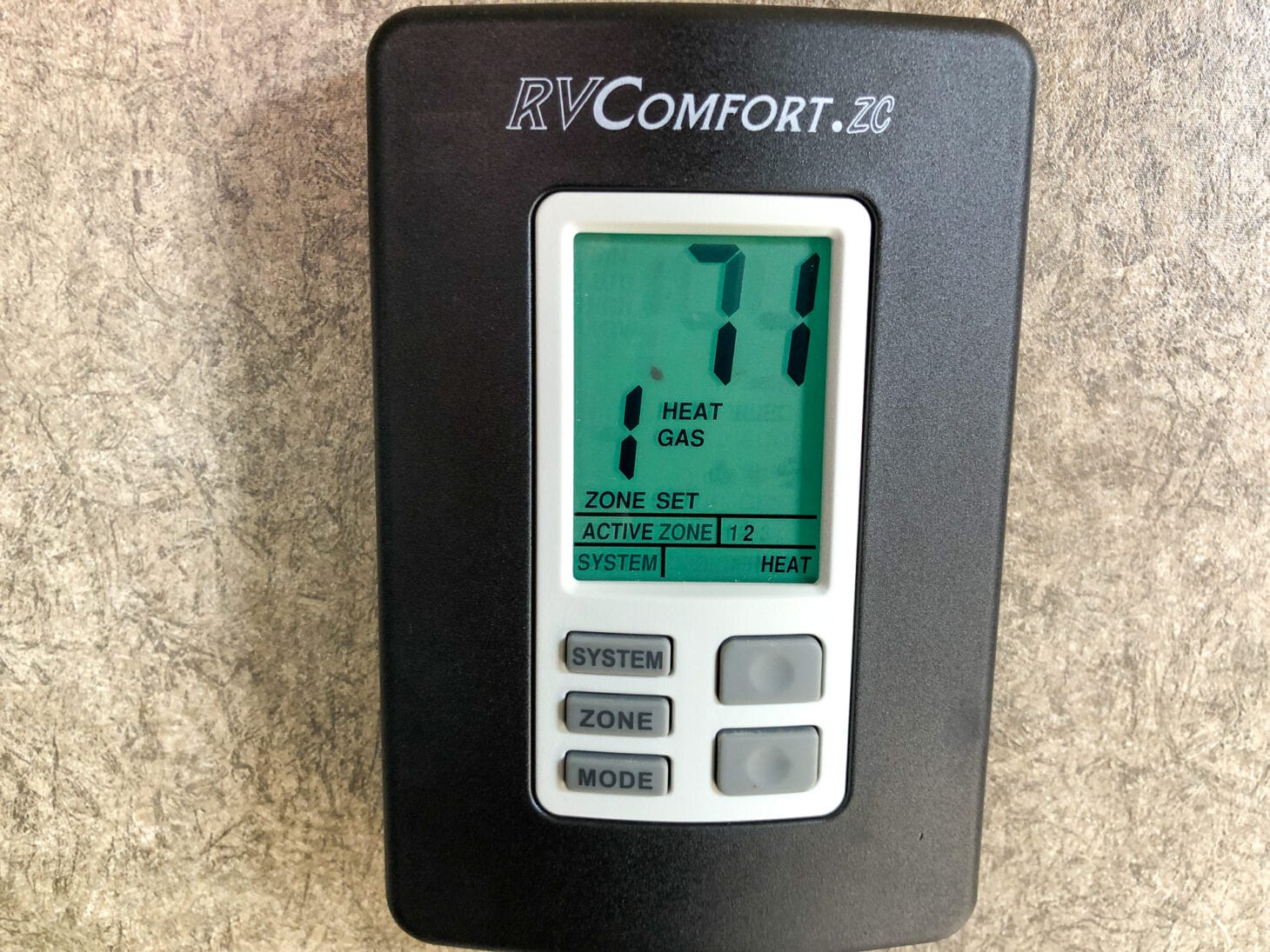
Troubleshooting: The Furnace Fan Runs, But The Propane Flame Doesn’t Light
Start by checking that the propane tanks (and the LP detector in some furnace types) are turned on and that you have enough propane to provide the high level of British thermal units (BTUs) needed for furnace operation.
If your furnace has tried to ignite three times unsuccessfully, it will give you a fault light and go into appliance lockout. Reset the system by turning off the furnace at the thermostat and turning it on again to allow the ignition process to restart.
Check the exterior exhaust vent to make sure that it isn’t blocked with spider webs or mud dauber nests—a telltale sign of this is soot on the side of the RV exterior. You’ll need an RV technician to remove these obstructions.
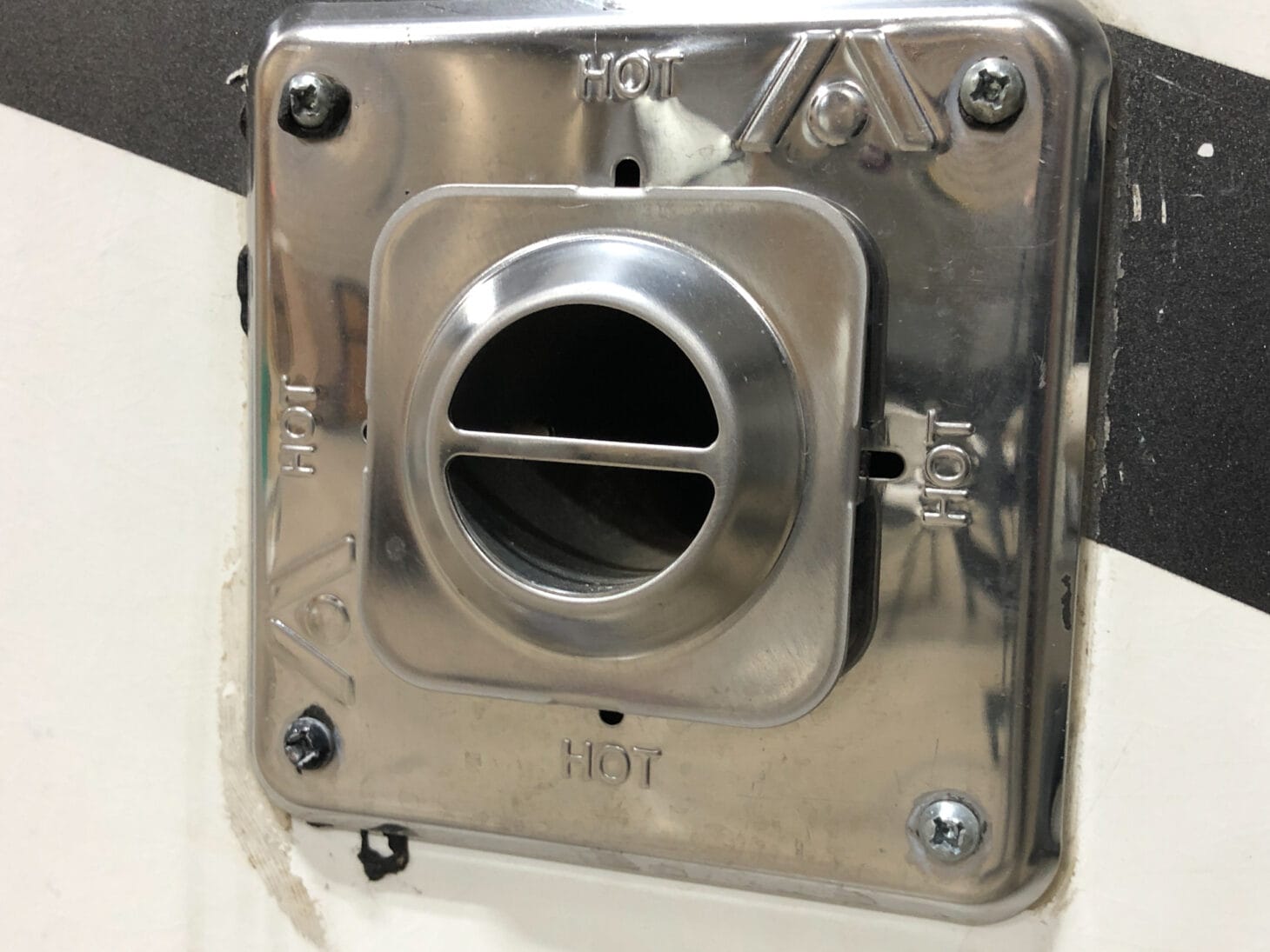
Extremely cold and damp outside temperatures can freeze the regulator. When winter camping, use a tank cover, tank warmers, and/or warming lights to keep the tanks and the regulator warm and protected.
Other problems like the circuit board or dirty ignitor probes can also cause this issue but require an RV technician to check.
Troubleshooting: The Furnace Runs Intermittently
This means that there’s a problem with either the sail switch or the high-temperature limit switch. They could be on the verge of going out or have a loose wiring connection. If the battery cable connections are loose, you can easily check and remedy; however, other issues require an RV technician.
This can also happen when the furnace exceeds the LP rate of vaporization when it’s extremely cold, and the LP tank is low on fuel. The furnace will run, but then run short on fuel. If you wait 15 minutes, it could create enough vapor to run again for a little while, but then runs short of fuel again.
Additional RV Furnace Troubleshooting Tips
- If you utilize both your furnace and a space heater, the thermostat might think that the temperature setting is already satisfied. Move the space heater to another room or turn it off.
- Mud daubers and other insects love to make nests in the furnace exhaust vent that leads into the burn chamber. Some RVers use mud dauber screens to keep them out (there are different sizes for different furnace models). Note that the use of mud dauber screens could void your warranty, so check with your manufacturer before use. This exhaust vent is also very hot when in use—don’t install any screens when your furnace is on.
- Furnace floor registers should be open, uncovered, and free of debris. If blocked, back pressure can be put on the system and possibly cause the burn chamber to overheat.
- If you can access your foil ductwork, check that it’s straight and free of kinks. If it’s expanded over time, trim some of the excess off.
These troubleshooting tips can help you remedy some common RV furnace issues. However, there are going to be problems that require the expertise of an RV technician—like cleaning or replacing your sail switch or high-temperature limit switch, clearing blockages like dauber nests, replacing the circuit board, and cleaning the ignitor probes.
This article has links to products that were carefully selected by our editors. We may earn commission on your purchases from these links. Visit this page for the full details of our affiliate marketing policy.
Meet the Authors

Brenda Puckett
Brenda is a certified RV inspector, registered RV technician, National RV Training Academy technical assistant, Women's RV Basics training instructor, small business instructor for the National RV Training Academy, published contributor for Girl Camper magazine, and the creator of "52 Ways to Empower Women RVers" YouTube series.

Roadtrippers
Roadtrippers helps you find the most epic destinations and detours—from roadside attractions to natural wonders and beyond.
Get the most inspiring stories from the road sent directly to your inbox.

- Trip guides
- Trip Planner
- Sign up Log in Sign out
- Log in Sign out
- ROADTRIPPERS MEMBERSHIP
- RV RESOURCES
Plan your journey, find amazing places, and take fascinating detours with our app.
We couldn't find an existing Roadtrippers account using that service. Please try signing in with another option or create a new account with Roadpass.
We need your email address to send you trip itineraries and other updates.

11 Most common RV Furnace problems and how to fix them

- BEGINNERS GUIDE
G. Yoganand
Rv furnace problems are very common and finding a solution to that problem is easy if you troubleshoot it step by step. In this article, we will see common RV furnace issues and how to get them resolved.
A preventive maintenance can really help in keeping the furnace in good working condition. A newly installed furnace can also face issues in which case its easy to get it replaced under warranty.
A working of furnace will vary depending on the type and model. In most cases, its a standard functioning though. Lets check out the furnace problems and how to fix them.
1. RV furnace Is Not Igniting
This is a common problem with furnaces in RV. When the temperature is going down, its snowing and everything is freezing, you don’t want your furnace to have this issue. Lets check how to troubleshoot this problem.
Issue With Propane Tank Gas Lines
It will be possible to diagnose any malfunctioning on the part of the propane gas or tank lines by assessing whether any gas is obtainable.
This can be done by setting a 2-way refrigerator to the propane, turning on the propane range which works internally, or igniting other appliances running out the identical gas line.
In case it does work, you can be certain that the propane tank is not responsible for this. In case no evidence of any gas is found within the system, it will be imperative to check the system thoroughly beginning with the tank.
Tackling an issue with gas lines or a propane tank
During winter, the metal is going to contract, and therefore, it is possible for a propane coupler to become loose.
Make it a point to verify that everything is quite tight. In case there would have been any leakage in the internal line which is running via the RV, you could be getting rotten egg smells.
In case, there is any leakage on the mainline, you will find it difficult to identify it simply by smelling. If feasible, let your hand run along the line while trying to feel any areas which have been either damaged or cracked.
Ensure to verify what exactly the propane line is going to enter inside the body of the camper. On some occasions, the gaskets might wear on a hose leading to a minor leakage.
It might be possible for you to use duct tape for wrapping a small leakage. Although it might work, it will not be able to fix the problem permanently.
Ignition Failure
On the majority of the RV propane furnaces, the igniter requires a minimum of 10.5 V for firing properly.
In case a couple of the onboard batteries has become compromised or have run quite low, there might not be enough spark for operating the thermostat or igniting the system.
At times, it is all about the tripping of the circuit breaker. Consequently, the panel should be checked for making certain that every single breaker for the thermostat and the furnace is switched on.
Next, let us see some more common RV furnace issues and how to fix them.
Failure of electricity within the propane system
If it is possible, try to use a backup battery which is able to produce in excess of 10 V.
Being disparate, you might be using the 12 V battery from the tow vehicle or the motorhome although this will be your “Last Ditch” effort. You never like to end up with a dead battery in the long run.
A wiring issue might not allow the electricity to ignite the surface
In case the onboard batteries indicate that they are supplying adequate power to the device, then you can test to see if the issue is due to a broken or loose wire. While monitoring wires this needs a careful approach.
Starting at the furnace itself could be helpful. Verify repeatedly all the connections as well as wires in it. On some occasions, the vibration caused by driving can cause a wire to become loose, or a connector might even fall out.
A wire may even get overloaded or it might also damage the protective coating.
Figuring out whether it is an issue caused by electricity
On the majority of the RV propane furnaces, the igniter typically requires a minimum of 10.5 Volts for firing properly. If a couple of the onboard batteries have run critically low or is corrupted, there might not be enough fuel for the device to ignite or the thermostat to function.
Occasionally, it’s just an issue of tripping a circuit breaker. Consequently, test the panel to guarantee that the furnace and thermostat breakers happen to be “On”.
An onboard battery which is dead or low
A simple multimeter test will inform you of the number of volts the furnace is equipped with. In case it is less at 10 V then one of the onboard batteries is likely to be the issue.
Without adequate electricity being supplied to the furnace or the thermostat, it might not be able to fire, and the fan may or may not work at all.
Consider swapping to a backup battery which can generate in excess of 10 Volts, if feasible. You may be capable of using the 12 Volt battery from the tow vehicle or motorhome in a moment of panic; however, it’s a kind of “Last Ditch” matter. You’d never like to end up with a dead battery as well.
Corrosion of the battery
Look closely at the connectors and the battery terminals. Electrolytic corrosion might lead to the development of a gray, white, or greenish material on a terminal over time.
Left unattended it can prevent the furnace system from getting electricity. A quick cleaning is often all that is required for re-establishing an effectual connection.
Corroded battery terminals
Cleaning them properly can help solve this problem. Lets see the steps we need to follow for this.
- Prepare a slurry blend of water and baking soda.
- Disconnect carefully the wires and the connections from the terminal which is corroded.
- Make use of a toothbrush for applying the baking soda mixture and scrub the corroded material carefully.
- Wipe the baking soda off comprehensively by making use of a clean paper towel.
- After reconnecting the cables to the terminal, verify to ensure that the internal lights of the RV, the furnace, and the thermostat are receiving power.
A problem with wiring might not allow electricity to ignite the furnace
In case the onboard batteries indicate that they supply adequate power to the device, then you can test to see if the issue is due to a broken or loose wire. This needs a careful approach while monitoring wires.
It might be a good idea to begin at the furnace on its own. Check repeatedly all the connections as well as wires. At times the vibration caused by driving can cause a wire to become loose, or a connector might even fall out.
A wire might even get overloaded or the protective layer can become damaged.
A Faulty Wire
In case the situation is not improved by this, it will be imperative for you to verify for any loose connection or cables between the ignition system of the furnace and the battery.
At times even anything as basic as the corrosion of the terminal of the battery will impede the efficient distribution of the required electricity.
In case a connection or cable becomes loose, it will be imperative on your part to make it tight or perhaps strip, clip, and protect it using a wire nut. A broken cable might be required to be spliced, patched, or even replaced whatsoever.
In case the battery terminals become corroded, it might be possible to get the required power from the connection by cleaning them using a mixture of baking soda and water and then using an old toothbrush for scrubbing it.
Damaged section of the cable
Lets see the steps to replace a cable.
- Snip out the section which has been damaged by making use of a wire cutter.
- Cautiously strip one inch of protective layer back on the two exposed wire sections.
- Take a fresh piece of wire which is similar to or perhaps thicker gauge and then strip the protective layer at each end by 1 inch.
- Braid together the ends of the cable which are exposed. Following this, they can be soldered and wrapped using electrical tape or you can even twist them safely within a wire nut.
Thermostat Issue
The “brain” of the cooling and heating system is actually the thermostat. Although they are intended to last a long time, burning out or making a part to malfunction is not unheard of.
In the majority of these cases, it will be imperative for the entire unit to be replaced given that the sensor is going to die.
Nevertheless, on some occasions, something such as a dead battery or a loose cable might result in the malfunctioning of the thermostat. Once this takes place, the message for igniting the furnace will not be sent and no gas will be delivered by the safety systems within the furnace.
Loose Cable On The Thermostat
In case the thermostat has got a digital display panel which is blinking, it might be because of a loose cable.
You have to remove the cable from the wall carefully for checking this. Some are fixed by small screws that might fall out and you might need to make them tight once again.
Verifying and replacing thermostat batteries
The thermostat is not connected to the onboard batteries in some RVs. These units are usually powered by AA batteries.
In the majority of these cases, the display screen is going to blink or it might also provide you with a blank screen. In such cases, replacing the batteries will be a sensible idea. While doing this verify whether the connections are corroded.
Following this, switch on the thermostat and allow it to reset the internal program. In case it is a problem related to low battery, the thermostat will begin to function normally while the furnace should be firing once again.
2. RV Furnace makes noise
Any of your RV appliances making noise is disturbing. Most of the times it will not be your furnace but its the furnace then be sure something is right with it. Turning it off is definitely an option but it wont fix the problem when you want it next time.
To get to the root cause the type of noise is an important thing to notice. The first thing that we do is to make sure clean it. Regular maintenance specially at the end of the summer season is what normal we follow.
Even small dirt or debris can cause the obstruction in the furnace which can lead to reduced efficiency and noise.
Make sure you are cleaning all the accessible parts or components to keep it running smoothly. Make use of wire brush to clean the dust over its components.
Wippign off fan balds during the maintenance is also recommended. Vaccum all the possibel areas isnide. Cleanig is definaetly a way to maintain the furnace but it may not immedietly reduce the nosie.
Other cause here could be loosen screws or other hardware. Make sure all the screws are tight enough and anything hat is lose is tightened. Other things to look at include duct inspection and repairs, cleaning the fan, and checking on igniter lines.
3. Reduced air flow
This can be due to distribution hose becoming loose or detaching from the connection. The ducts can be long enough and there could be some form of obstruction that’s causing the low air flow. Removing the excess duct can be one solution if you encounter the problem initially.
See if there is adjustable flow in case if your furnace. If its there then do check and adjust it accordingly.
The fan or the blower in furnace could have become old resulting in low air flow. Or it could have become weak due either due to more use or obviously due to quality. One of our friends travel trailer Dometic furnace had this issue but they couldn’t get it fixed. It was later replaced by the company.
4. RV Furnace Keep Cycling On And Off
Furnaces are designed to make sure they are turned off once the temperature is reached. Later if the temperature falls it would again turn itself on to get the thermostat set temperature.
If the furnace keeps cycling on and off despite the temperature meeting then there is some problem with the furnace functioning. This can be caused if the furnace vents are blocked.
Check for the furnace box, see if there is anything that is blocking the furnace vents. Any obstruction in the vents will result in malfunctioning and heating of the furnace.
This will lead the temperature limiting switch to turn off the furnace. Vents can blocked due to various things, debris dust can also block it. Make sure you are doing preventive maintenance as per schedule.
5. RV furnace keeps tripping reset button
This is common issue with new purchases. We have seen this happening when the furnace reset button would trips suddenly. If the furnaces was installed recently check with the company support.
They should come and have a check. The most common reason why this would happen is again the heating problem. The duct would be blocked or is long enough.
The vent could be collapsed or here could be issue with the circuit board. Many a times the furnaces come with such issues, the companies guys know that and they would see if it get through. You would get the replacement if the issue isn’t resolved.

6. RV furnace does not stay lit
This is the ultimate result of other issues that can be with the whole furnace system in your RV.
It can happen when you have a bad thermostat. Make sure the thermostat is is fine working condition. A low propane pressure at the furnace ca also result in furnace not lighting.
7. RV furnace keeps turning off
This could be an issue with the limit switch. Most common story with many goes like this, initially the furnace would turn on, go on till the temperature are met according to the thermostat.
Then turn off the furnace and later as the temperature falls it could not turn on again. This happens if the furnace is in locked out sate.
The issue could be with the control board which wouldn’t respond to the lighting signal.
In most cases the control board need to be replaced. If you are in warranty then the company would replace it. We have seen such a issue with our suburban furnace last year.
8. Furnace shuts off after 30 seconds
This again is seen by many new RV furnace buyers. A couple friend of ours had this issue with their Atwood furnace where in the furnace would turn on and then shut of in like 20-30 seconds. And this was happening every-time.
The problem in this case is with the blocked vents of the furnace. The temperature limiting switch shuts off the burner when high temperature are reached. In this case it happens very fast.
For this make sure the vents are cleared and there is no blockage. The air flow could be limited due t the obstruction. There could also be possibility of having a bad temperature limiting switch.
If even after clearing the vents the issue is not resolved then do check with the company or technician.
9. Furnace turns on but no heat
This issue or if the furnace is blowing cold air could be due to the circuit board issue or the limit switch issue. As a first step you may want to clean the combustion area. Clean all the debris or spiders.
See of the cleaning dies the trick. If it does not then take help from the technician. n mist cases its the circuit board. A bad propane tank regulator can also result in this issue.
The internal furnace switch wont let the furnace ignite resulting in less heat. So, you will have the fan running but thee wont be any heat or less heat.
10. RV furnace clicks but won’t start
The furnace may make a click sound but it wont start. This happens when the spark igniter try’s to ignite the pilot light but fails. This is nothing but a ignition system failure.
This has to be fixed and its a good idea to take technical help here. If the furnace is in warranty then you will get it replaced. But, normally the furnace would be too old when this problem occurs unless its a manufacturer fault.
11. RV furnace cycles on and off
This could be the result of blocked vents on the furnace or any other obstruction caused. Either ways make sure you take it on priority as otherwise it can result in heating problems.
This can also cause carbon monoxide generation. The exhaust on the furnace can be blocked by various things. Makes sure you clear it out and make sway for air flow.
The RV thermostat itself could have gone bad resulting in control cycling on and off. If its the thermostat then you can get it replaced, they are less costly to replace.
In Conclusion
Riving in winter is fun and adventurer but a malfunctioning furnace will make it worse. You definitely don’t want to be there in the middle with a non working furnace. Keeping yourself warm is keeping yourself comfortable.
Do take out some time after the summer season to do the basic preventive maintenance. If you have installed a new furnace then try it out multiple items before heading for a camping trip with heavy snow and chilling cold.
You Might Also Like
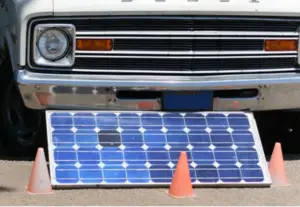
How To Charge RV Battery With Solar

Where to park RV overnight For Free

How To Sanitize RV Water Tank (Using Bleach Or Vinegar)

How to Tell If My RV Roof Is Fiberglass
RV Furnace Won’t Ignite: How to Fix Yourself

About the Author
Tom Davidock
Does this sound familiar? You turn your RV furnace on, you hear the blower run, but it doesn’t light, and the blower turns off. This is one of the most common RV furnace problems people experience when it comes to the RV furnace not working. Does this mean that you need a new furnace? No, in most instances, this is something that you can troubleshoot and fix yourself.
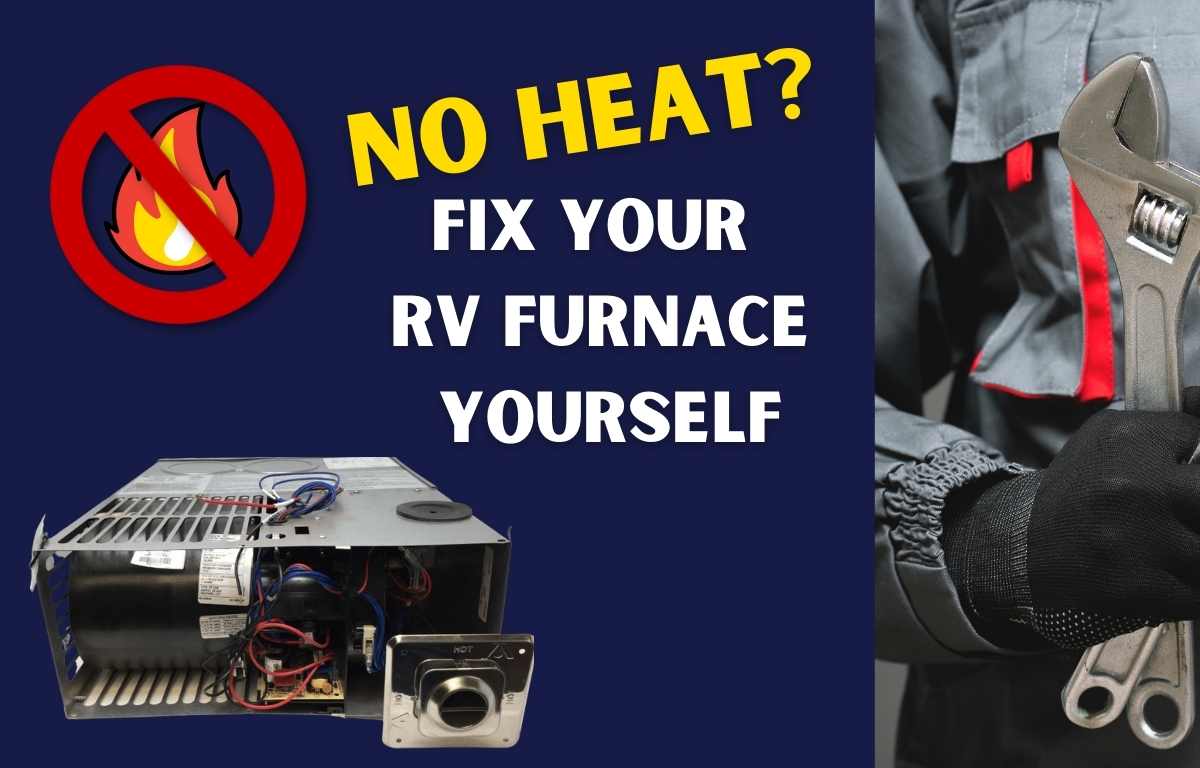
The following tips are only if your RV furnace blows cold air, fails to light, and turns off after running for a short period.
The shortlist of RV Furnace Troubleshooting Steps:
- Check your propane supply
- Check for sufficient power
- Inspect RV vents
- Check sail switch
- Inspect flame sensor
- Check limit switch
- Check igniter
How does an RV Furnace Work?
Learning how a Recreational Vehicle (RV) furnace works is essential to understand this problem. The problem you’re experiencing is likely related to one of several safety features of your RV furnace. When you turn on your RV furnace, it will follow a safety startup process. Once the thermostat registers that the requested temperature is higher than the current temperature, it will engage the RV furnace.
The first step of startup an RV furnace is for the furnace blower motor to turn on. The blower will typically run for 15-30 seconds before the furnace tries to ignite. This test ensures that the blower exhausts any built-up combustibles in the system before it lights. Once the blower runs for a short period, the furnace will receive the signal to ignite. This is started by the furnace fan using airflow to depress a small switch called a sail switch. If depressed (closed), it sends a signal to send propane to the system. At this point, you should hear a clicking sound from the electric igniter. This sound indicates a spark is being applied to the propane released into the furnace burn chamber.
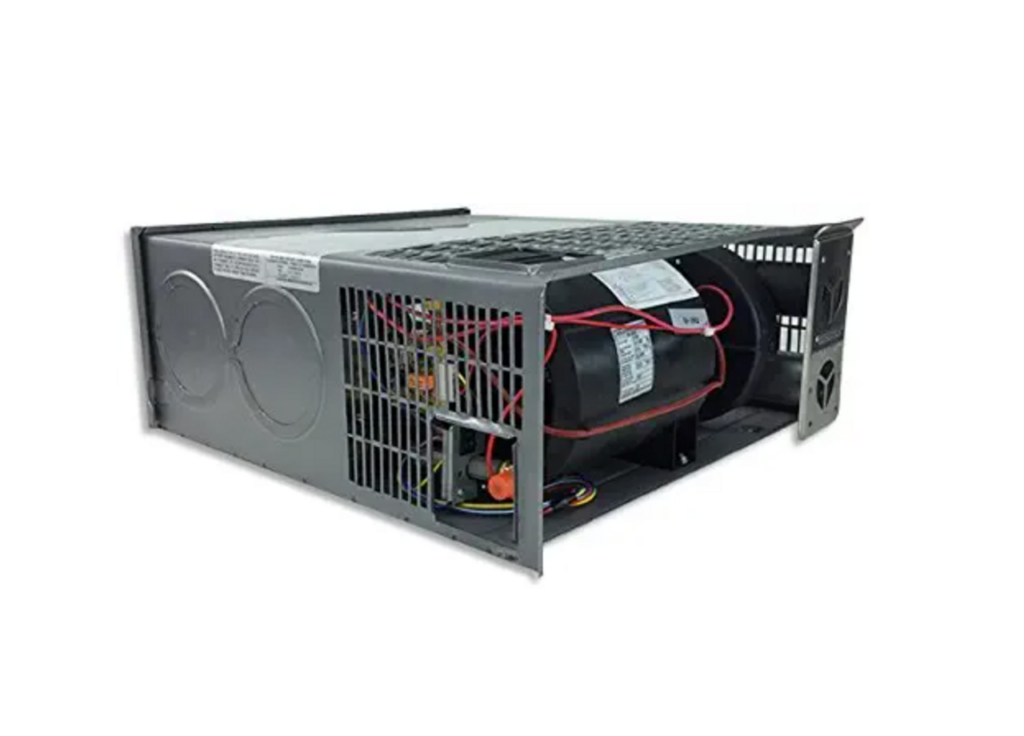
Once lit, the furnace will begin to heat up. If the temperature stays within the limits, it will continue to run until the RV thermostat says not to (reaches the set temperature). If the temperature gets too hot inside the chamber because of excess heat, the high limit switch, another safety feature, will trigger, cutting off the fuel supply. As long as the temperature is within the limit, the furnace should continue to run.
Next, the regulator will continually supply propane gas to the unit, which will burn inside the combustion chamber. As long as you have an adequate propane gas supply, the furnace will continue to run, heating the air in the heat exchanger and blowing hot air into the RV until the thermostat recognizes the desired temperature. Next, the furnace will receive a signal to cut off the propane supply and go into shutdown mode. Finally, it will repeat the startup process when the thermostat calls for more heat.
Why your RV furnace doesn’t light?
If the furnace doesn’t light, the RV furnace will recognize this and turn it off. This safety feature prevents propane from running into the RV furnace without ignition. It’s a critical safety feature and is part of every RV furnace.
Solving this problem can seem complicated. However, while it can signify a bad furnace component, it doesn’t always indicate an expensive repair. So before you call out a mobile RV tech or take it in for servicing, there are a few things that you can try yourself, assuming you’re a little handy and comfortable using some basic hand tools.
Below are some troubleshooting steps to follow:
1. Check the propane
One of the most common problems is actually the simplest to solve. You may be out of propane, or your propane tank valve may be closed. If this is the case, your furnace will not receive any propane and will be unable to light. Therefore, it’s worth checking your fuel source levels and ensuring the valve is open.
A propane pressure lock is one of the most common issues an RV owner may experience, which is easy to fix. Most RV propane regulators have a safety feature that prevents large amounts of gas from exiting the tanks into the propane line too quickly. Unfortunately, this can sometimes be triggered when you replace a tank. For this reason, if you just had your tanks filled and now your furnace isn’t starting, this could be the problem. To resolve this, turn off your propane tanks and reopen them very slowly. This will allow the propane to enter the system at a controlled pace and should solve your problem.
Additionally, if it’s a very cold night, it’s also possible for your regulator to freeze up and prevent gas flow. A temporary fix to diagnose this problem is to pour hot water over the regulator. However, if you do this, dry it off immediately, so the water doesn’t freeze, and coat the regulator with ice.
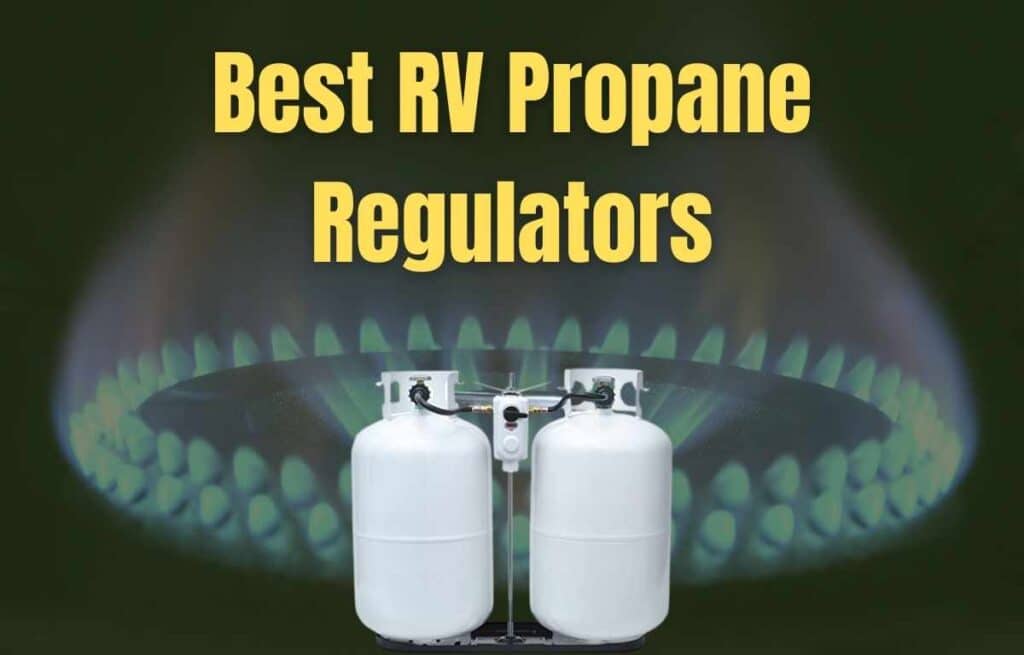
You can also turn on your stove and make sure that it lights. If you have adequate propane for the stove burners, you should also have it for the RV furnace. If your stove does light, let it run for a few minutes to ensure you’re not simply burning any residual propane in the line. f it does, turn on the oven and light the pilot light. You can also test the propane at the water heater and ensure you’re getting gas there. If it stays lit and you’re sure the tanks aren’t empty, move to the next step.
If propane isn’t flowing from the tanks and you know that they’re full, it’s also possible that you may have a bad regulator. While they’re typically very dependable, they can malfunction. Luckily, replacing a propane regulator is an easy fix.
2. Fuse and Battery
While a relatively simple fix, it’s easy to overlook. Before pulling apart the furnace components, ensure it’s getting power. Next, check for a blown fuse in your fuse panel or circuit board for the RV furnace. Since most RV furnaces run off 12 volts DC power, you’ll need to check the actual fuse and not simply flip a circuit breaker switch. If it’s blown, try replacing it. If it continues to blow, you have an electrical load problem caused by a loose or broken wire or malfunctioning component on the furnace.
Also, you may have low battery voltage if you’re operating on battery power. It’s easy to miss this problem if you’re plugged into shore power. Sometimes that power at the campsite goes out, and you don’t notice because your lights and other RV appliances are functioning. Check your outlets and battery voltage to ensure you have an adequate power supply and not simply experiencing a dead or dying battery. If your battery isn’t fully charged, you may not have enough power to allow the fan to rotate at the proper speed, causing the ignition sequence to stop when the sail switch doesn’t engage.
3. Check vents
While it’s not too common for a vent to become plugged up, it can happen if it sits in storage . Therefore, you should always inspect your RV vents at the beginning of every camping season. Any small opening makes a great place for mice or insect nests.
https://amzn.to/3VVPeuw
Your furnace exhaust vent expels hot air from the combustion chamber. It needs to flow freely (no obstructions). If it doesn’t, it can cause your furnace to shut off or, worse, start a fire. If you see any mice sign or other debris plugging your vent, you’ll need to clear it and clean your furnace since you likely have other material inside the furnace chamber.
4. Sail Switch
The RV sail switch is a simple switch, like a light switch, that, once engaged, sends a signal to the propane valve to open. If the switch doesn’t engage, it won’t send that signal; therefore, your furnace can’t ignite. Next, the RV furnace blower fan engages the sail switch. The sail switch isn’t too complicated. It is simply a thin metal sitting within the blower’s body. Once the blower runs, the air produced by the blower will force the switch (the thin piece of metal) to close, completing the circuit.
If the blower can’t depress the switch, it will never engage, so that it won’t trigger the propane valve to open. Without the propane valve open, it can’t release into the furnace and won’t light. A tell-tale sign of a malfunctioning sail switch is when you turn on the furnace and hear the blower start up and run, followed by some clicking of the ignitor. However, it will turn off because it doesn’t light. It doesn’t ignite because the propane valve never opens. This scenario often indicates that the sail switch is not engaging.

There are a few things that can cause this problem. First, while the sail switch may be bad, this is usually not the case. One of the most common reasons a sail switch may fail is when a small amount of lint or fur gets into the switch and prevents it from closing correctly. If you have animals in your RV, that is a good indicator that this may be the problem. Since most RV furnaces don’t have an air filter, anything circulating in the air (dust, hair, etc.) can enter the furnace area.
It’s important to note that it only takes a tiny piece of debris (lint, dust, pet hair) to cause this problem. You can typically remove the switch and clean the blockage by hand if this is the issue. Cleaning the sail switch is not difficult. If you have outside access to the furnace, this can be a 5-minute task. If not, you may need to remove the furnace to access it.
If you need to remove the furnace, you’ll likely need to remove the propane supply line connection. This process isn’t complicated, but you should always be careful when working around propane. Always turn your propane off if you’re working in or around a gas line or appliances. You should also be comfortable working with propane lines and fittings. Finally, you’ll need to connect this back up correctly, or you may create a dangerous situation.
An underperforming blower is the other common problem associated with a sail switch that doesn’t engage. If the blower can’t produce enough airflow, it may not engage the switch. While this can always indicate a bad blower, a more typical scenario is a low battery. The blower may receive low voltage causing it to run, but not fast enough. A dying battery can always cause this problem. Therefore, ensuring that you have an adequately charged battery for your furnace to operate is essential.
5. Flame Sensor
Your RV furnace, for a good reason, has many safety devices. One of these is the flame sensor. When your RV furnace lights, a small sensor inside the combustion chamber will detect the flame and send a small current of electricity to the control board, telling it that everything is functioning as needed. If it doesn’t recognize a flame, it won’t send that message, and the furnace will turn off. This issue may appear similar to a malfunctioning sail switch.
The sensor will keep the gas flowing if your furnace lights and continues to burn propane. However, a bad sensor can indicate that there is no flame when there is one and cause the furnace to turn off. This is less common to fail than a blocked sail switch, but if you experience a furnace that runs, blows hot air, then shuts off, this could be the culprit.
The most common problem with a flame sensor is a dirty one because burning any fuel creates moisture, and over time, metal can rust. Also, if your furnace is running rich (too much fuel and not enough air), it can create soot, which can coat the sensor and other furnace components. So the most common fix for a faulty lame sensor is typically a good cleaning.
6. Limit Switch
Once the sail switch engages, it will send power to the gas valve, telling the system to send propane to the furnace. The gas valve will open and allow propane to enter the furnace. While the gas valve can be a problem, it’s not very common. If the sail switch works and powers the gas valve, the furnace will receive fuel and should attempt to light, and the chamber will heat up. The next test of the furnace is to ensure the chamber temperature is within the correct range. If it gets too hot, it will trip the limit switch. A tell-tale sign of a malfunctioning limit switch is that the blower will run, you may notice some heat coming out of the vents, but it will shortly turn off. The fan will then blow cold air and then turn off.
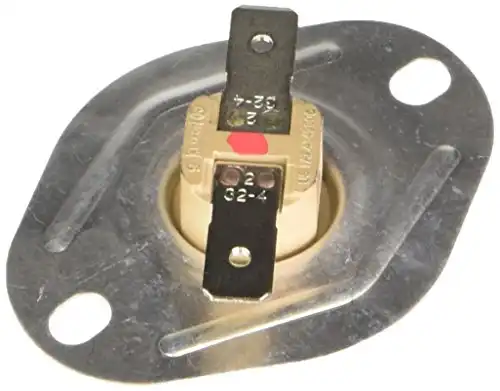
Here’s an overview of the steps for the furnace lighting: The thermostat will tell the furnace to turn on, which will engage the blower. The blower will trigger the sail switch and then send power to the limit switch, telling the furnace it’s time to light. If the limit switch is faulty, it may not trigger the ignitor, or if it does, it may run for a short period and then turn off. If it is bad, it’s possible that you won’t even hear the furnace clicking trying to ignite. As a result, the fan motor will stop, and the furnace won’t light.
Another problem that can cause the high-limit switch to trip may be improper air flow created by a blocked duct. If the furnace can’t exhaust the warm air created, the temperature inside the chamber may increase and trip the switch. Always check to ensure that any vents connected to your air ducts are unobstructed and flow freely, providing proper airflow to the living space of the RV.
If you have a bad limit switch, you’ll most likely need to replace it. It’s not a difficult task, but you will need to order a new switch to fix it. You may have a bad connection, but that isn’t very common.
7. Ignitor/electrode
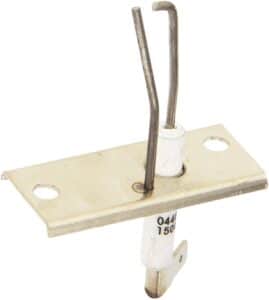
The final step of DIY troubleshooting for this scenario is inspecting the ignitor/electrode. Assuming that the sail switch is working and sends the signal to the limit switch to light, the next step is creating the spark (the clicking that you hear) to light the propane. If the sail switch and limit switch operate correctly, you may have a bad ignitor. These don’t typically fail as often as the sail switch and limit switch, but that’s not to mean they can’t.
When diagnosing the ignitor, the first thing to do is remove it and check for corrosion or a broken metal arm. It’s similar to a spark plug, where there is a gap between two pieces of metal. If one of the pieces breaks, it can’t create a spark. Likewise, if the gap is too wide or narrow, it may not be able to spark. The required gap is usually ⅛” of an inch. An excellent way to measure this is to insert a ⅛” drill bit in the gap opening. If it doesn’t fit or there is too much room, you can try adjusting it, being careful not to break the switch.
While these are not the only things that can fail on a furnace, they are some of the more common issues people experience when their furnaces don’t light. If your fan blows but fails to light and then turns off or turns off shortly after lighting, you may be dealing with one of the above problems. If you’re comfortable working on appliances, you can try to fix/diagnose these issues yourself. However, you may want to call an RV tech or take it to a repair shop if this is outside your comfort zone. You are working with a propane appliance and do not want to create a dangerous situation for you or your family. If you’re camping in cold weather, you don’t want to simply switch to electric space heaters since the furnace is typically needed to heat the underbelly of your RV, preventing your pipes from freezing.
It’s also important to note that various things can cause the above issue. One may be a bad control board (the brains of the furnace). Replacing this can be more complicated and expensive. This repair is probably best left to an RV tech. It’s also possible that you may have a bad gas valve, which isn’t providing enough gas pressure to the furnace. Finally, you may need a new thermostat if it’s malfunctioning.
Knowing your RV and how it works can give you the confidence to head out on the road. If you need to fix a problem, it’s good to know that furnace replacement parts are widely available and not too expensive. In addition, a lot of information is available to provide you with the knowledge to diagnose and fix problems. While this can save you some money, it can also save a camping trip if something goes wrong. As with most things with an RV, performing routine RV maintenance is essential for your components to operate properly. Good Luck!
Once you get your RV furnace up and running, check out some great tips for lowering your RV propane use . Also, consider picking up a space heater for your RV as a backup.
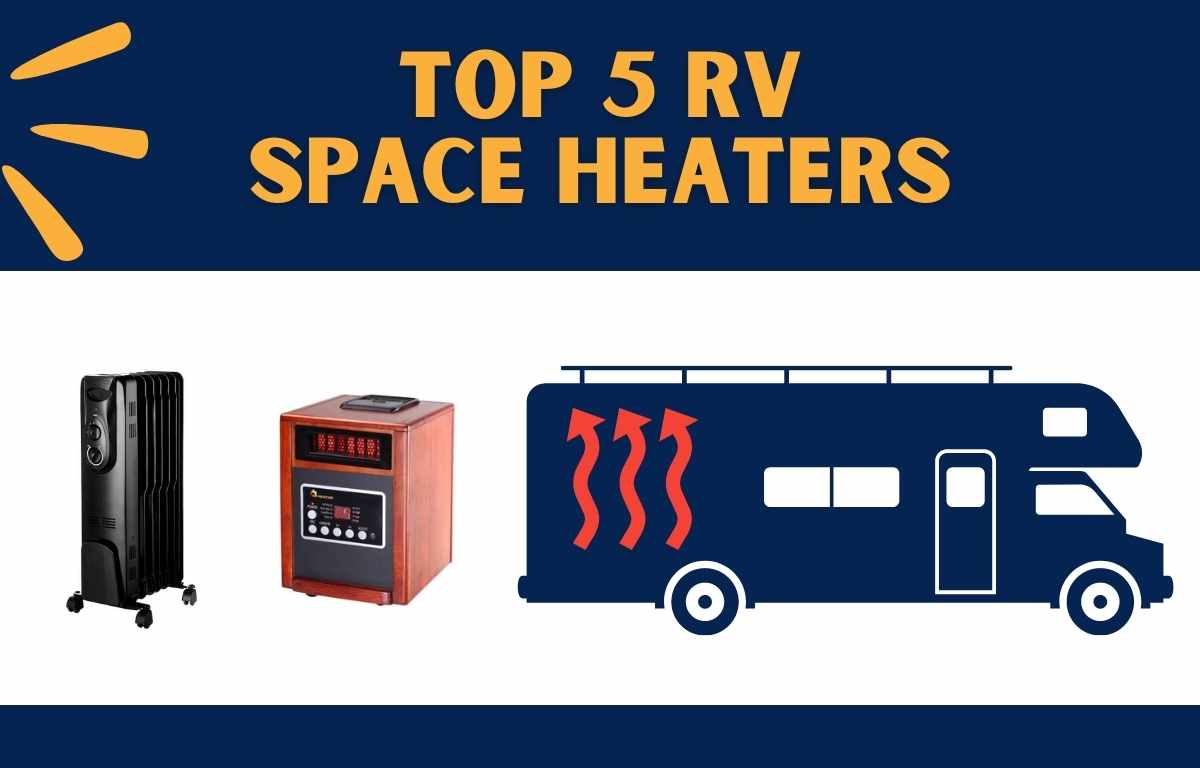
8 thoughts on “RV Furnace Won’t Ignite: How to Fix Yourself”
Best article I’ve ever read with step by step & explanations as to why & what to do. Especially when you can’t just get a tech every time something happens. Thank you! – C McCormick
So happy it was helpful! Thanks for stopping by.
Great detailed article. For people* with good experience with tools, this can save lots of time and money. *As the author mentions, being good with tool is not a guarantee of a safe fix. Propane is dangerous, so be cautions with what you get into.
Thank you for reiterating this point.
thank you for the article
Sure thing- thanks for stopping by
Thank you so much for this article and video. I’m 65, female living in my camper permanently I have cats with me. So, I’m guessing I have an unhappy sail switch, covered in kitty hair. At least I’m praying that is all it is. Worked fantastic last winter 2022.
Some RV furnaces have a reset button that can be pressed to reset the furnace’s control board. Refer to your furnace’s manual for specific reset instructions.
Leave a Reply Cancel reply

- Remember me Not recommended on shared computers
Forgot your password?
- Travel Trailer
Jayco furnace doesn't stay lit
- atwood furnace
By Wilieco January 27, 2022 in Travel Trailer
- Reply to this topic
- Start new topic
Recommended Posts
I was hoping for some help troubleshooting my furnace. It is an Atwood Mobile model 8531-IV-DCLP in a 2004 Jayco Greyhawk. The furnace spins the fan as normal and then lights as it should. It burns for about 10 seconds and goes out. It relights and burns for another 10 seconds and goes out and then relights a 3rd time burns for 10 seconds or so and then goes out and shuts off and locks out. If I reset the furnace (turn heat off at thermostat and back on) it will repeat this process all over again. Usually on the 3rd time it will fire and burn normally. Sometimes it take 4 or 5 times of resetting it. Sometimes it will just light normal. When I first got the RV it did this and I ran around trying to get advice and it just started working and it worked for 4 trips with no issues. Then while parked at home went out to do some cleaning and went to light the furnace it did it again. I find it odd that it has only did it at home. Since it lights I would assume that the fan, sail switch, and ignitor are all good. I can hear it burn and also went outside and can fell the heat from the exhaust. Seems that furnace is not sensing that it is lit and shuts off. I can't seem to find anything that tells me how the furnace knows if it is lit. Thanks in advance for any help
Link to comment
Share on other sites.
That is probably the ignition probe failing to sense the heat from combustion. I would replace it as they are available from Amazon and not expensive.
Good travelin !...............Kirk Full-time 11+ years...... Now seasonal travelers. Kirk & Pam's Great RV Adventure
I assume that it would be inside the combustion camber with the ignite and burner
Here is a link to a copy of the Atwood service manual for your furnace. Here is a link to purchase the proper ignition probe for $9.26.
Dutch_12078
Before you start throwing parts at it, try pulling off the ignitor wire on the circuit board and reconnecting it a few times to clean up the contacts. The flames sense circuitry works at the millivolt level, and it takes very little corrosion to interfere with it. Since the ignitor is apparently igniting the gas properly, it's likely ok. The ignitor is not usually prone to being intermittent. The circuit board can be intermittent though.
Dutch 2001 GBM Landau 34' Class A F-53 Chassis, Triton V10, TST TPMS 2011 Toyota RAV4 4WD/Remco pump ReadyBrute Elite tow bar/brake system
I found the ignitor and ordered it. should be here tomorrow. I cleaned up everything on the burner side and put it back together. It fired after the first reset. I didn't think of cleaning the control board side so I will try that tomorrow.
Parts arrived and put in the new ignitor/sensor and it works just fine now.
thanks for all your help
Happy to hear you got it and thanks for returning to let us know that it is working.
Join the conversation
You can post now and register later. If you have an account, sign in now to post with your account.

× Pasted as rich text. Paste as plain text instead
Only 75 emoji are allowed.
× Your link has been automatically embedded. Display as a link instead
× Your previous content has been restored. Clear editor
× You cannot paste images directly. Upload or insert images from URL.
- Submit Reply

Chalkie · Started Tuesday at 03:29 PM
Larry and Robin · Started Saturday at 08:08 PM

jenandjon · Started March 17, 2021

wtmtnhiker · Started May 8, 2023

lappir · Started Tuesday at 04:34 PM
- Existing user? Sign In
- Online Users
- All Activity
- Create New...

RV Furnace Not Working? (Troubleshooting & Common Problems)
When traveling in your RV, it’s important to have a working heater. Unfortunately, it’s usually on a cold night when we find ourselves asking why is my furnace not working in my RV?
As a general rule, RV furnaces usually stop working because of insufficient battery voltage or dirty air filters. So check the air filters, and ensure shore power or a generator is providing power. Or if boondocking, ensure the batteries are charged and the inverter is on.
There are a couple of other reasons why your RV furnace is not functioning as it should and having a general idea of how your RV furnace works will make troubleshooting issues much easier.
In this article, we’re diving deep into RV furnaces. We’ll talk about how RV furnaces work and troubleshoot common problems, like blowing cold air, how to light it, and how to test it.
RVs are great, but there’s always something new to learn, even for the most experienced RV owners.
Table of Contents:
How does an rv furnace work, why is my furnace in my camper blowing cold air, how do i test or reset my rv furnace, what are rv furnace diagnostic codes, will my rv furnace work without a battery, does my rv furnace have a pilot light, rv propane furnace troubleshooting tips, why does my rv furnace start heating but stop before it reaches the set point, do rv furnaces have a reset button.
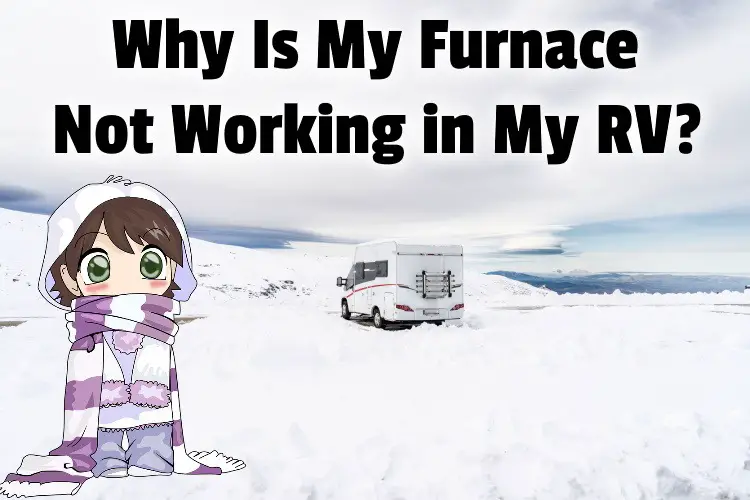
An RV thermostat indicates to the blower to turn. The motor will run for 15-30 seconds, then the pilot light or direct spark will ignite the burner to heat the air. After that, the blower propels warm air into your RV.
Understanding how your furnace works is vital to diagnosing problems.
The furnace should turn off in the reverse order after reaching the set temperature. To troubleshoot a problem with your RV furnace, you have to first rule out simpler problems.
But to rule out simpler problems, you need to know the general mechanics. I can’t account for every model and furnace type, but most common RV furnaces will work similarly.
They will all work something like this:
- The thermostat triggers a request for heat , sending a current to the RV furnace.
- The electricity powers the time delay relay , which in turn passes power to the RV furnace blower. source
- The blower spins up and pulls air from the air return , creating a flow of air through the heat exchanger and out of the ducts. Another fan pulls air into the combustion chamber to feed the furnace.
- The blower speed increases , then the fan air causes the sail switch to close.
- Power then flows through the High Limit Switch and onwards to the Control Circuit Board.
- Power is delivered to the control board , it opens the gas supply and causes the DSI igniter to spark.
- The gas lights and creates heat within the combustion chamber.
- Heat will pass into the heat exchanger , heating the air passing through the Ducts.
- The RV begins to warm up , then the thermostat will reach its pre-configured temperature.
- Once the correct temperature is reached , the power is removed, and the burner will shut down.
- The fan will continue to run in order to cool the furnace safely until the time delay switch opens.
If you’re like me, you like to see how things work. Words simply aren’t enough. There is an excellent video that shows how RV furnaces work on the bottom part of this article.
Furnaces with pilot lights operate in a similar fashion, but the control board doesn’t trigger the ignitor. Once the pilot light is lit, the furnace is controlled by the flow of gas alone.
All RV furnaces operate on battery power.
You don’t need to plug into the mains or run a generator. As long as the RV batteries are suitably charged, and you have gas, you can operate the furnace with no issues.
Common reasons for camper furnaces blowing cold air are low battery voltage or a dirty filter. If the voltage is too low, the fan will operate, but the gas valves will not open. Dirty filters will restrict air flow, causing the heat exchanger to overheat and shut off too quickly.
With the furnace in your home, the blower doesn’t start until the plenum is warmed up.
The plenum is an air distribution box attached to the supply outlet of the HVAC equipment. It is what’s responsible for heating or cooling the air to make your house comfortable.
In an RV, the furnace starts running immediately.
That’s because it uses the same motor to power the hot-air blower and the blower that moves air through the combustion area. If the batteries are too weak to power both blowers, the sail switch will not light. If it is already lit, it will shut off.
So, if the house batteries are weak, the blower motor spins.
But it doesn’t spin fast enough to trigger the sail switch. As a result, you get a furnace that blows cold air. If the blower is blowing, and the sail switch is triggered, but the furnace is still blowing cold air, it could be due to a dirty air filter.
Dirty air filters are the most common cause of furnace problems.
Dust and dirt restrict airflow. If the airflow is restricted too much, the heat exchanger will cut off. If the blower is running, but cold air is coming out, try replacing the filter.
If you turn your heating unit on and feel warm air for a moment and then feels cold, it could be the flame sensor. If the flame sensor is dirty, your gas burner won’t stay lit. This will cause the air to go cold shortly after the furnace is turned on.
This can also occur when the house batteries are weak. The blower motor spins, but not fast enough to deflect the sail switch. This results in a furnace that blows cold air.
Job this morning that had furnace trouble, no heat! It’s important to service this unit yearly so please give us a call for all of your RV repair needs, and we’ll take care of you! ???????? pic.twitter.com/FUpBCQTxH7 — abs_camping_repair (@AbsRepair) December 5, 2020
The reset button is located inside the blower compartment on the side of the motor. It is usually labeled, and sometimes red. Turn off the power supply and the gas to your furnace. If the reset button is up, push it to reset your furnace. You can also pull the fuse, wait a few minutes, and reinsert the fuse.
There are a few different ways to reset your furnace.
You may have to go as far as switching off the power and the gas and then turning it all back on before you do a reset. If that’s the case, you may have to press and hold the reset button for 30 seconds. For a more exact way to reset your furnace, consult the manual for your furnace.
How to test your furnace with basic tools
The first, and most important thing is to get a voltmeter.
Having a voltmeter and knowing how to use it will help diagnose and fix most RV furnace issues. Use the voltmeter to ensure that sufficient power is reaching the components that make up the RV furnace. You don’t need anything fancy.
A cheap one will usually get the job done.
Newer RV furnaces will usually have a small LED attached to the ICB. If there is a problem, the LED will flash. The number of flashes will point to the type of issue. There should be a chart nearby to help you decipher the codes that the flashes indicate.
Typically, fans are located just behind the access cover. The motor provides power through a shaft to both the main furnace fan and the combustion fan. They are usually covered in a protective case that may also contain the sail switch.
The RV’s 12-volt power system will power the motor.
If the RV is plugged into shore power or has a generator running, there should be no drop in voltage to the motor. But if the RV battery is weak, the voltage may not be enough to power the motor.
Wear and tear or corrosion of the wiring may impact the voltage as well. Checking voltage at the batteries, as well as at the motor, may help diagnose some issues.
Airflow issues with your RV heater
You should also check the external combustion exhaust and air intake.
These are located at the external furnace cover panel. Bugs, dirt, and nests can block airflow, inhibiting operation. Be sure to replace the cover after checking for blockages. Some furnaces will not operate with the external cover removed.
Dirt that gets into ducts and air vents can restrict flow. Dirt in ducts can also build-up on the heat exchanger, which can affect performance or even be a risk for fire.
Some furnaces will enter a lockout condition if an issue is encountered. This means the control board won’t allow the furnace to start. The lockout condition can be reset by turning the thermostat off and reducing the temperature, so the furnace doesn’t turn on. Wait approximately 30 seconds, turn the thermostat back on and increase the temperature to the desired level.
All gas appliances are set to operate with a standard supply pressure of approximately 3 PSI.
The pressure within a propane tank is much higher than this, so a propane regulator is used to control the gas pressure . If a residue is present in the propane tank, this can interfere with the regulator, causing it to fail or work intermittently.
Additionally, an empty tank will not provide any pressure, so be sure to check your levels.
If you suspect an issue with the gas supply, then a gas regulator is the most likely component to fail. Thankfully they are inexpensive and can be easily replaced.
The specific diagnostic codes used for RV furnaces can vary depending on the brand and model of the furnace. However, some of the most common diagnostic codes include:
- Code 31: This code indicates a problem with the air flow. It could be caused by a dirty air filter, a blocked air intake, or a faulty blower motor.
- Code 32: This code indicates a problem with the furnace’s ignition system. It could be caused by a dirty or faulty electrode, a weak spark, or a problem with the gas valve.
- Code 33: This code indicates a limit or flame rollout switch has been tripped, which is usually caused by a safety mechanism that shuts off the furnace when it detects a problem with the heat exchanger.
- Code 34: This code indicates a problem with the furnace’s ignition sequence, which could be caused by a blocked or dirty burner, a faulty gas valve, or a problem with the ignition control board.
It’s important to note that not all RV furnaces use diagnostic codes, and those that do may use different codes depending on the manufacturer. Additionally, some manufacturers may provide specific codes for certain models or series of furnaces.
If you are experiencing problems with your RV furnace, it’s always best to consult the manufacturer’s manual or contact a qualified technician for assistance in identifying and resolving the issue.
An RV furnace will work without a battery when connected either shore power or when using a generator. But when not connected to those power sources, RV furnaces will require battery power. And even with one of those, it will still need propane.
Most things in your RV need a properly functioning 12-volt DC house battery system. That is where your RV’s power converter is used. When plugged into shore power, the converter is converting 120 volt AC power into 12 volt DC power.
Furnaces don’t rely solely on electricity, either. They also need propane. So, you can bypass the need for a battery by hooking up to 110 power. But it still uses propane.
Your best bet for a properly functioning furnace is through your converter or good, fully charged batteries.
If you own a Class A motorhome and are considering living in it full-time, there are some things you want to keep in mind.
You want to consider the temperatures, the amount of snow and ice, as well as how insulated your RV is.
But there is a lot more to living in a Class A motorhome than that. Just read this recent article to learn more about living in a Class A motorhome in the winter.
Just click the link to read it on my site.
Are you prepared for a change of seasons? Get your RV furnace ready for winter, your extended warranty recommend to have your furnace inspected and serviced. #rvfurnace #rvservice #rvheater #readyforwinter #rvseason #rvparts #rvappliances #rvheat #whatsintheshop #shoptalk pic.twitter.com/IY1hpx1C24 — California RV Specialists – Dustin Simpson (@dustincalrv) October 4, 2020
Old RV furnace systems mostly have pilot lights while most newer RV furnaces have replaced the pilot light with a direct spark ignition system. This means they have electric ignitions, and there is no need for a pilot light.
So unless you have an older RV, just make sure your propane is turned on, and the thermostat is adjusted properly.
The chances are that your RV does not have a pilot light or it has an automatic pilot light. Many new RV furnaces have replaced the pilot light with direct spark ignition or an automatic ignition system.
If your furnace is having a hard time keeping the pilot light lit, check the thermocouple to make sure it’s positioned correctly. A malfunctioning regulator on your propane tank could also cause an irregular pilot light.
First, make sure the main propane valve for your RV is turned on. The main shutoff valve is usually located at the propane tank.
To turn on the furnace, just use the thermostat. Make sure it’s set to heat and adjust it as necessary, just like you would at home. The furnace should automatically kick on and off to maintain the proper temperature.
If it does have a pilot light, make sure the propane tank is on, turn your fan to auto, and turn your thermostat to the highest heat setting. Let the fan run for a few minutes.
Next, remove the access panel and remove the cover.
Turn your gas dial to the pilot position and hold down the knob. Then, light the pilot. Press the striker ignition device several times, or use a lighter or a match. Release the knob, and turn it to the “on” position.
Set the thermostat to the desired position.
If you do not recognize this, it is the view of our front RV furnace. It stopped working properly while #boondocking in 39°F (4°C). Good news 2nd furnace and weather is warming. One of the goals of trip is to test systems for warranty service. Minor bump to a good trip. pic.twitter.com/N9XkFRT0bT — Our Nomadic Story (@OurNomadicStory) December 12, 2018
Dirty air filters
Dirty air filters are the most common cause of furnace problems. Dust and dirt restrict airflow. If the airflow is restricted too much, the heat exchanger will cut off, but the blower will continue to run, blowing out cold air.
While some issues can be resolved with these tips, not everything can be fixed. If your furnace still isn’t working, even after troubleshooting, it may be time to call a professional.
The first thing you want to do is take off the cover and get a look inside. Look for anything amiss, debris, or anything that could be blocking the exhaust.
Also, verify the intake is open and ventilated. Blow out any dust and debris from the assembly using pressurized air. Clean off the grate, and make sure there is nothing covering it. Clean out any debris the pressurized air missed.
If your furnace is blowing cold air, try turning the heat off and back on . If the air feels warm and then turns cold, it may be that the flame sensor is dirty. If the flame sensor is dirty, the burner won’t stay lit. This causes the air to go cold soon after the furnace is turned on.
If it’s a particularly cold day or night, your heat pump might just be blowing air that’s cooler than your body temperature, making you think it’s cold. But as it gets colder and your heat pump can’t pull as much heat in from the outdoor air, the air coming from your vents drops slightly in temperature. source
Check the battery
There should be a minimum of 10.5 volts coming into the unit. Check to make sure power is coming into the RV. Check all of the fuses. Check the thermostat to make sure it’s not damaged, and check to make sure the tubing that delivers the heat to the vents are not kinked or bent, obstructing airflow.
If you aren’t on shore power or using a generator, a fully-charged house battery system along with an inverter is essential for ensuring the heating system has the power to operate.
Check your propane levels
It could be that the furnace blower can start, but if you don’t have enough gas, the burner won’t ignite. Also, check to make sure your propane is turned on. If your furnace does have a pilot light, look inside and make sure it’s staying on.
If none of these things work, it’s time to consider calling a professional. The issue could lie within the furnace assembly.
Bad motor relay
If your furnace fan isn’t turning on, it could be due to a malfunctioning relay on the circuit board.
If the relay fails to open, the blower/fan cannot start. To identify the issue, you can try troubleshooting the relay. One way to do this is by bypassing the relay and testing if the fan can run directly on battery power. If the fan works properly with direct power, then the fan is not the problem and the relay might be the culprit.
On the other hand, if the fan fails to run even on battery power, it’s likely that the fan is problematic or stuck, perhaps due to rust if it hasn’t been used for a while. It’s worth noting that if you hear a squealing sound from your RV furnace, it’s likely due to a faulty blower motor that requires replacement.
Repairing another rv furnace #mobilervservice pic.twitter.com/mN5KEVLhxN — Omaha RV Repair (@Omaharvrepair) March 16, 2017
Faulty sail switch
An RV furnace that’s running but not producing heat is often caused by the sail switch failing to open, which is one of two safety switches in the furnace. When the sail switch doesn’t open, the furnace won’t produce heat.
The sail switch can fail over time or become clogged with debris like dust, pet hair, insect nests, or rust. Sometimes, the sail switch can be cleaned by blowing it, and it will work correctly again. But other times, it will need to be replaced.
The location of the sail switch can vary depending on the specific RV furnace system.
However, in most cases, the sail switch is located inside the furnace compartment, near the burner assembly. It’s usually connected to a small lever arm that extends into the path of the furnace’s combustion air intake. When the blower fan turns on, it creates a flow of air that moves the sail switch, allowing it to open and complete the circuit that starts the burner.
Faulty propane valve
If your RV’s furnace fan is functioning, but your furnace is not producing heat, a faulty gas valve could be the problem.
To diagnose the issue, position yourself near the exhaust port of your RV’s furnace and ask someone to activate the thermostat to turn on the furnace. After starting up the furnace, you should hear the fan begin to spin, followed by the solenoid making a clicking sound.
Then, you should hear a rapid ticking noise (the ignitor) and smell propane gas.
However, if you hear the fan turn on, followed by the solenoid clicking sound and the rapid ticking noise, but do not smell propane gas, it’s likely that the furnace’s gas valve is not functioning properly.
The propane valve in most RV furnace systems is located near the burner assembly.
The burner assembly in most RV furnace systems is typically located near the bottom of the furnace unit, underneath the combustion chamber. It can usually be accessed by removing the furnace cover and insulation.
It is typically connected to the main gas line that runs through the furnace and is responsible for regulating the flow of propane to the burner.
However, the exact location of the valve may vary depending on the make and model of the furnace. It’s best to consult the manufacturer’s instructions or a professional RV technician for specific information on your RV furnace’s propane valve location.
Faulty ignitor
Moving on to the next step of the furnace lighting sequence, it’s time to check the ignitor.
Take a position near the exhaust port of your RV furnace and pay close attention to the sounds that occur when the thermostat is raised inside your vehicle by someone else.
First, the fan should turn on, followed by the click of the solenoid. After that, you’ll either hear the ignitor rapidly ticking or not making any sound at all.
If you can smell LP gas at this point, but your furnace doesn’t ignite, then the problem is likely to be the ignitor.
The ignitor is typically located near the burner assembly and is responsible for creating the spark that ignites the propane gas in the furnace.
Another note: If you see soot on the outside of your RV near the exhaust vent, this is a sign that there is improper combustion. It’s not normal to see soot on your exhaust vent.
There are several reasons why your RV furnace might start heating but stop before it reaches the set point.
One possible cause is a dirty air filter. A clogged air filter can restrict airflow, causing your furnace to overheat and shut off prematurely. The solution is to replace the air filter with a clean one.
Another possible reason is a faulty limit switch.
The limit switch is designed to shut off the furnace when the temperature reaches a certain level. If the switch is defective or dirty, it may shut off the furnace before it reaches the set point. You can try cleaning the switch, but if that doesn’t work, you may need to replace it.
Another cause of a furnace that starts heating but stops before it reaches the set point is a faulty thermostat.
If your thermostat is not calibrated properly or is malfunctioning, it may cause your furnace to turn off prematurely. Try replacing the batteries in your thermostat, and if that doesn’t work, consider replacing the thermostat altogether.
A clogged or malfunctioning propane regulator can also cause your RV furnace to stop heating before it reaches the set point. If the regulator is clogged or damaged, it may not be supplying enough propane to keep the furnace running. You can try cleaning the regulator or replacing it if necessary.
Lastly, a dirty or clogged burner assembly can cause your RV furnace to shut off prematurely.
The burner assembly is responsible for igniting the propane and creating heat, so if it is dirty or clogged, it may not function properly. Try cleaning the burner assembly and see if that solves the problem.
RV furnaces do not typically have a reset button. Instead, the furnace’s control board is designed to automatically reset itself when an issue occurs.
While some furnace models may have a manual reset button, this is not common across all brands and models of RV furnaces. It’s important to consult your furnace’s manual or contact a professional technician if you are unsure if your furnace has a reset button.
In general, if your RV furnace isn’t working properly, it’s best to start troubleshooting by checking the thermostat, propane supply, and ventilation. If these areas are functioning correctly, then the problem may be with the furnace’s control board or other internal components.
If you suspect that your furnace’s control board needs to be reset, there are a few steps you can take. First, turn off the furnace’s power supply by flipping the breaker switch. After waiting a few minutes, turn the breaker switch back on and try restarting the furnace.
If the furnace still isn’t working, it may be time to call in a professional technician to diagnose and fix the issue. They can inspect the furnace’s control board and other components to determine the cause of the problem.
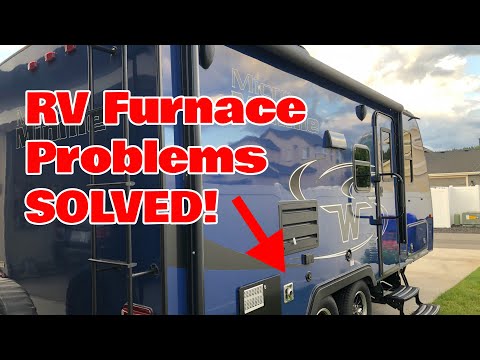
Final thoughts
If your furnace is blowing cold air, fixing it could be as easy as changing out the filter, but you may need to check your propane and battery power, too.
But in some cases, the issue may be something a little trickier.
I’ve provided a troubleshooting guide to get you through most situations. If you haven’t found your fix here, it’s probably time to consult a professional.
Jeff Campbell
Jeff Campbell travels on and off with his 3 daughters in a Newmar Baystar Class A Motorhome. He writes extensively on both RVs, campgrounds, parenting on the road tips, remote learning & schooling, and much more! Click Here to learn more about me. Click Here to learn more about my site. Editorial Policies.
Top Related Posts
19 Best Electric Space Heaters for an RV (2024 reviews)
How to keep your loved ones warm is top of mind as the winter months are here again. To help with that, I’ve carefully prepared a review to help you select the best electric heater for an...
How Many Watts Does an RV Furnace Use?
If you aren’t connected to shore power in your RV, knowing how many watts an appliance uses can be critical in gauging how long you can go before running out of power. So, how many watts does an RV...


- You are here:
- Home »
- Blog »
- » Troubleshooting RV Propane Furnace That Won’t Ignite
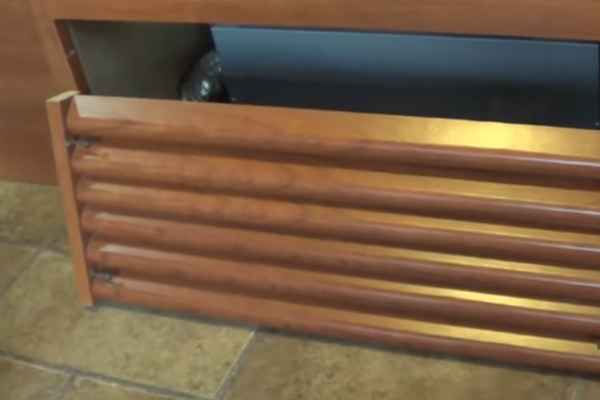
Troubleshooting RV Propane Furnace That Won’t Ignite
- November 22, 2018 /
- RVing 101 /
- By R. Geraldi /
Chilly weather outside? Not great news for an RVer like myself and so many others. Luckily, each motorhome comes equipped with a decent propane furnace which keeps everyone warm inside the vehicle. But like most things, furnaces can malfunction . Maybe they won’t ignite, or the igniter is busted. Perhaps a fuse is blown, or a terrible smell is spreading. Whatever it is, an RVer ought to have a handy RV propane furnace troubleshooting guide. Luckily, I’ve compiled a list of tips dealing with this particular subject.
What Is an RV Propane Furnace?
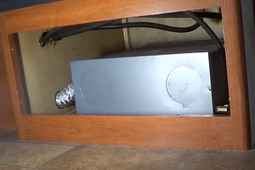
As its name suggests, it’s a propane-powered furnace for the motorhome. Each RV comes with furnaces of different sizes, types, and capabilities. Having a functioning one inside the RV is extremely important, and sometimes even the smallest glitches can cause huge issues.
The Ins and Outs of an RV Furnace
Where is the rv furnace located.
With most RVs, the furnace is located on the lower side of an RV. I can usually tell what the furnace looks like and where it is based on the outside vents.
It’s not a coincidence that the furnace is where it is. Most of the ducts that run from the furnace run from the bottom through the entire RV, heating it up evenly. In addition, it’s easier to access and perform repairs from its position.
Do RV Furnaces Have Filters?
The short answer is — yes and no. Usually, they don’t, but filters can be added if an owner feels inclined to do so.
It’s important to note here that, should anyone install a filter on their RV furnace, they have to pay attention to how restrictive it is, or rather — isn’t. Airflow is very important, and a thick filter can do more harm than good.
How to Remove an RV Furnace
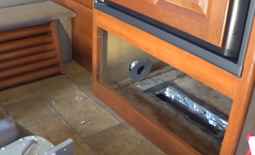
With modern RVs, removing the furnace is easy. However, I shouldn’t have to point out to only do that when the furnace is cold, i.e. hasn’t been used for several days.
There are several key steps I should do before I can remove my furnace. First, I must make sure everything related to the furnace is turned off since I don’t want to be shocked by electricity. Next, I disconnect the gas line, the vents and any wiring connecting it to the thermostat and other gadgets. These wires might even have to be cut and reconnected later. I then unscrew any section of the furnace that’s screwed to the base and I can slide it out with no issues.
How to Install an RV Furnace
Considering that the installation of an RV furnace is almost the exact opposite of its removal, I won’t repeat the steps in too much detail. It’s important to connect the gas line, the wiring, and the vents properly and securely. If not, they can cause lots of problems in the future. In addition, if the furnace “slides” about, it might be a good idea to harness it with something, like screws.
How to Lubricate an RV Furnace
One of the issues that will pop up in this text deals with noise, specifically squealing. This can be caused by motor bearings, and the quickest solution is lubrication. However, there’s the question of how to lubricate them. Most people make the mistake of pouring too much oil on, “drowning” the bearings in it. That’s not how it should be done. For maximum effect, a few strategic drops of oil will suffice.
Common Problems with an RV Furnace
Most of the problems will get addressed here, but I’ll summarize them nonetheless. Some of them relate to the furnace not igniting, even if other elements are working fine (such as the fan). Other times, the furnace won’t switch off. Then there are various noise-related problems, such as clicking, humming or squealing. Of course, any foul smells usually indicate problems with the furnace as well.
Each of these problems has a suitable solution, some of which even the owner can apply without the aid of an expert.
RV Furnace Won’t Ignite
This is a fairly common problem every RVer faces. The furnace not igniting can happen because of several reasons, so whenever I have an issue like this, I follow a few steps. First, I check if I have any propane left. If not, I refill the tank as soon as I can. However, if that’s not the problem, I take a look at the thermocouple. In case it’s broken or damaged, I buy a new one and replace it . Thermocouples for RVs aren’t expensive, and anyone can replace them.
RV Furnace Blower Comes on but Won’t Ignite
Another common issue is when the blower begins to blow, but the furnace still isn’t igniting. Normally, this is an electrical issue. If it happens to be low power, I merely replace the battery with a one that has the right voltage. This usually solves the problem.
Fan Runs, But No Heat
I’ve heard people have this problem plenty of times in the past. There will be times when the furnace fan clearly works but no heat comes from it. The first thing I suggest be done here is to check for batteries or poor electrical connections to the motor of the blower. No electricity results in less force to ignite the sail switch. However, a different problem might be insufficient ventilation. If this is the case, I clean up all of the heat registers. Even a small blockage can obstruct the air flow, so doing this properly is important.
Blowing Cold Air
People get confused, and sometimes even scared when this happens. After all, a furnace shouldn’t be blowing cold air, right?
Once again, the low battery voltage can be the issue here, so the best thing to do is to replace the battery. A weak power source won’t trigger the sail switch, and it won’t regulate the air flow.
However, the sail switch itself can be the cause of this issue. Maybe it’s rusted, or there could be an insect nest somewhere inside of it. Normally, I check the sail switch thoroughly every week just to make sure it functions properly.
And then, there are the propane tank problems. Maybe it’s the moisture in the valve, the regulator or even the hoses freezing at low temperatures. Or maybe there’s too much butane within the propane tank. Normally these issues have to do with the RV propane tank dealer’s supplier. The only solution I can think of when it comes to this is to replace the dealer.
RV Furnace Igniter Not Working
The igniter is the part of the furnace that lights it up, and once it’s broken, there’ll be no heat. Any number of reasons can be behind a broken igniter. Usually, I first check the pilot light. In case it isn’t working, the problem is most likely with the thermocouple, which I check immediately after. Sometimes, the thermocouple needs to be replaced, which I do as quickly as possible after the check. However, the air filter, the blades or even the motor can be an issue. That means I need to clean them thoroughly and lubricate where necessary.
Burnt fuses or tripped breakers can also cause problems with the igniter. I always go over the electrical service panel if I suspect this to be the case. Next, I relight the pilot heat and proceed to check the temperatures. If necessary, I clean up the burner ports or the pilot orifice and adjust the burner’s air shutter, just in case.
Finally, I try to light the pilot with a match like I would on regular gas stoves. If none of these steps work, the igniter is definitely broken, and I proceed to replace it.
RV Furnace Igniter Replacement
Replacing igniters should be, and I have to stress this, something that an RV specialist should do. Whenever people ask me how to replace igniters, I always tell them to call a repairman, as igniters are very delicate.
However, there are ways for me to replace the igniter myself if for some reason I can’t get a repairman to do it for me. After I switch off the furnace, I move to the access door and open it. Next, I disconnect every wiring harness of the furnace and unscrew the igniter from its position. Then, after buying a new igniter, I insert it into the furnace with its tip facing the inside and screw it into place. Finally, I reconnect the wiring harnesses and shut the access door. Of course, I always ignite the burner to give the new igniter a test run. In case it doesn’t work, I retrace my steps or just get a different igniter.
RV Furnace Backfires
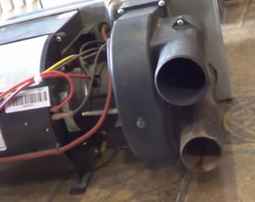
It’s surprising how often this problem pops up. There will be times when the furnace backfires severely. Most of the times, this happens just after ignition. Any number of issues can be the cause of this. For example, the igniter can be malfunctioning or dirty, and, as such, can allow for gas build-up. Once gas accumulates, it “bangs” after ignition loudly. I’ve already outlined how to replace an igniter earlier in the text.
However, the combustion impeller could also have some damage, resulting in less air flow. Alternatively, the exhaust could be filled with debris build-up or an insect nest or two. All of these prevent air flow and allow for gas build-up. This means that some cleaning is in order.
RV Furnace Gas Valve
This gas valve is what regulates gas flow to the burners and the pilot light. It might be a simple tool, as it only opens and closes, but it’s extremely important to the furnace. Gas regulation is key to proper heat distribution.
RV Furnace Gas Valve Troubleshooting
In case the valve isn’t working, I check two major parts before considering replacing it. The first is the pilot light — I have to relight it, and if I’m successful, the valve will work. The second part I check is the thermocouple. If the thermocouple isn’t generating enough voltage, replacement should follow. Also, while I’m checking the thermocouple’s voltage, I go over the voltage of other mechanisms linked to the circuit too.
Naturally, if none of these are the problem, the gas valve is most likely defective. When that happens, I replace it. Just like with igniters, I always advise consulting a professional when replacing the gas valve. Sometimes, only the valve coil might need replacement, not the whole valve itself.
Low Gas Pressure
There will be times when the gas levels are really low. This can be a problem, as there will be no flame, or it won’t stay on for long.
A few issues can be the cause of this. The easiest one is having an empty propane tank. If that’s the case, I either refill it at a proper facility or outright buy a new one. Never take your RV anywhere without a full furnace propane tank. Low BTU ratings can also be the culprit behind low gas pressure.
However, the single most common reason has to be the leaks. Hoses of propane tanks will occasionally get damaged, and when they do, they must be replaced. I would also suggest buying a propane cylinder that also has a leak detector and a gas gauge. This handy tool will show if there’s any difference in pressure within the lines. That way you can be sure if there’s a leak or not.
Naturally, you won’t always be able to locate a leak. That’s why I always take the tank to a proper serviceman to check for them. It might cost a bit of time and money to do this, but it’s always better to be safe than sorry!
RV Furnace Smells like Propane (a Gas Leak)
I’ve talked about leaks earlier, and if anything is a telltale sign of a leak, it’s the smell of propane. To put it simply, it’s impossible for a functioning propane tank to regularly let out the smell of propane. What IS possible, however, is for the propane smell to come from a new furnace or even a functioning furnace that hasn’t been ignited in a while. In other words, it’s not a problem if the smell comes out once and then disappears with gradual use.
Continuous odors, however, are a problem. In case there’s a gas leak, I don’t think twice at all. I disconnect the tank and immediately buy a new one. It’s important to dispose of the old tank at the proper disposal facility, for environmental reasons.
RV Furnace Smoking
This particular issue might actually not be an issue at all. It really all depends on the amount and the color of the smoke.
If, for example, the smoke comes excessively from a new furnace, that’s perfectly fine. It’s just the new furnace “getting used to” the heat. Normally, the amount of smoke will go down very soon, and it will work just fine.
However, when there’s a lot of smoke with older, used furnaces, there’s most likely a problem there. The problem is especially bad if there are black smoke and black residue. In that case, the best thing to do is to clean up the burner thoroughly. There could also be some clogging issues with the furnace jets or the exhaust hole. Both of them will require unclogging and cleaning.
RV Furnace Smells like Burning Rubber
RVers, especially new ones, usually complain about the odor that reminds them of burning rubber. It isn’t pleasant, and it usually sets off red flags. A burning rubber smell must be a bad sign, right?
Well, not exactly. Most companies that build furnaces will use a variety of oils to lubricate the metal. Some oil residue will, therefore, remain in the furnace, even after years of continued usage. Normally these smells only come from time to time. In fact, my own furnace had that same “issue” four months ago. The best thing to do is to just let the furnace work normally. It shouldn’t take long for the smell to dissipate.
There are some RVers who’ve mentioned the smell of burning rubber not going away. If that’s the case, the only solution is to visit the closest RV repairman and have them look into it. However, even with persistent smells, the answer is most likely the oil residue. It just takes longer to go away with some RV furnaces.
RV Furnace Blower Won’t Start
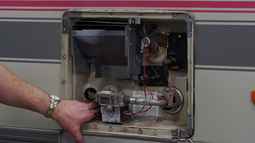
At times, the blower just won’t blow. It makes no noises, nor does it crackle or vibrate. It just stands there motionless.
In case this happens, several things might be the problem. Normally, I first check the power connections. One or two connectors might have come loose, so I reattach them. However, I thoroughly clean them first, just to be on the safe side.
Other issues can include an out-of-place temperature selector, broken or disconnected wiring or continuity issues with the thermostat. The first one is easy to solve, as it only includes resetting the selector to the desired position. Faulty wiring, on the other hand, will always require help from a professional repairman. When it comes to the thermostat, I either replace it or remove any problems with its individual parts (wiring, the relay, the motor, etc.).
Furnace Will Not Shut Off
Once the furnace starts, it should shut off when the desired temperature has been reached. However, some furnaces continue working even past this, which can be dangerous.
If my furnace doesn’t shut off, I immediately check the thermostat . In 90% of cases, that’s the issue at hand. However, the furnace can continue working even after the thermostat has been pulled out. My very next step is to cut the thermostat wire going into the furnace itself. Bad wiring is a common issue and usually requires professional assistance.
Naturally, the thermostat might not be the issue altogether. Sometimes, it’s the heater or even the control board. If this is the case, I replace them as quickly as possible.
RV Furnace Will Not Stay Lit (It Works Intermittently)
While not the most serious of problems, it’s absolutely one of the most annoying ones. The RV furnace will fire up,but for some reason won’t stay turned on. It shuts down and won’t maintain any heat.
Luckily, the problem is common enough that every technician or repairman will give the same answer — it’s the control board. The flame would start up, but if it isn’t steady, the safety valve closes up and extinguishes it. The control board contacts usually corrode from overuse, and it’s important to take care of them from time to time. Usually, the flame sensor contact is the first one to go. Naturally, I could simply buy a new control board and replace the faulty one, which works just as effectively, if not better.
RV Furnace Making a Loud Noise
Now, this isn’t just a problem for me. It’s also the problem for my neighbors. Nobody likes a loud RV furnace, especially the one that rumbles into the night like a motorcycle.
Usually, this type of noise has something to do with the burners. If it does so, all I have to do is adjust the air-to-fuel ratio. For this, I merely need a screwdriver and some screws and wing nuts. However, not everyone knows how to do this, so I suggest asking a professional or an RV owner with similar problems.
Of course, there could be any number of other issues when it comes to loud noises. If it’s the fan making the noise, soundproofing can help. Pilot lights and gas lines can also be the cause of this , and they will require checking as well. Other possible “culprits” could be the sail switch being on, blower motor problems, or the time delay relay switch being closed instead of open. The solutions to these are closing the relay switch and the sail switch, as well as replacing a faulty blower motor.
RV Furnace Squealing
Unlike the roaring noise described above, the squealing noise isn’t that common, but it’s still an issue. Usually, this noise comes either from the fan or the motor. Normally I just lubricate the motor bearings and it works just fine, without any unnecessary, annoying squeals. However, in case of faulty bearings, I always recommend proper replacement. It isn’t cheap, but it’ll fix the problem.
Sometimes, the fan itself will not be aligned properly and will rub against the “birdcage.” If that’s the case, I merely align it to where it should be. However, I strongly advise seeking out professional help for this step.
Furnace Making Clicking Noises
Clicking, but not lighting.
Normally there are two possible scenarios where the furnace would start clicking. The first is not that dangerous — it’s merely the igniter trying and failing to start the furnace. Aside from the igniter breaking down, other possible problems could include a faulty thermocouple, a bad pilot light or a shut gas valve. I’ve outlined how to deal with all three earlier in the text, as well as how to deal with a faulty igniter.
Clicking While Off
However, clicking doesn’t always include the igniter. In fact, there might be a far more dangerous problem. I’ve once had to deal with water in my electrical compartments. There wasn’t a lot of it, but just enough to begin eating at the fuses and the wiring. In case this happens, paper towels and hair dryers are the way to go. I would get rid of as much moisture as I can, then proceed to replace all the fuses. Sure enough, the clicking would stop.
RV Furnace Blowing Fuses
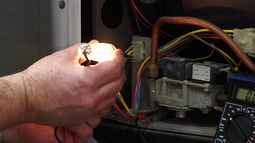
Sometimes an RV furnace will blow a fuse while working. This is pretty standard and it only requires putting in a new fuse. But there will be times when the furnace will blow a freshly replaced fuse as well. If that happens, something else might be the problem.
In my experience, it usually comes down to faulty or loose wiring. Considering how frequently animals tend to “invade” RVs, it’s possible that a mouse or a rat might have chewed off some wiring, leaving it exposed. If it touches a different wire, it can cause a blown fuse, just like with any piece of electronic equipment. In that case, the best thing to do is to either replace the wire (or the whole mechanism) or just use electrical tape. It’s important to keep in mind that electrical tape is just a temporary solution. When it comes to the electronics, I always contact a professional. Or instead, I buy a new part for the furnace and replace the faulty one myself.
Another common issue regarding blown fuses includes the blowers. Normally, RVs have two separate blowers — for air regulation and gas removal. If either one of the two fails in some way, the fuses will keep blowing. Of course, a faulty blower must be replaced as soon as possible.
RV Furnace Drains Battery
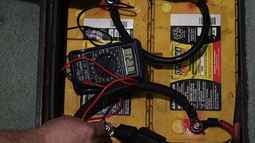
I’ve said this before to my RVer friends, and I’ll say it again. Never, under any circumstances, go anywhere with just one furnace battery. Most of the time that one battery will run out during a cold night, and that could be troublesome.
Usually, I have at least two batteries for the furnace in my RV. That way I can charge one while using the other safely. Three batteries might be the golden standard, though, but not more than that.
Naturally, there are batteries out there that get drained pretty quickly, even in regular weather. Or they just don’t recharge properly. Most of the times, they’re just defective and require replacing. However, sometimes it’s the wiring of the furnace that’s the problem. In that case, I recommend a thorough cleaning. If the problem is worse, a technician might have to come over and take a look at it.
Will an RV Furnace Work Without a Battery?
Well, yes and no. If I plan on using my RV at home and hooking it up to shore power (i.e. my house or an outside generator), I technically don’t need a battery as a power source. However, there’s always the risk of a power outage, in which case most of the RV systems will shut down instantly.
In my opinion, there should always be a battery inside the RV furnace. A lot of RVs require a battery in their converters, as it acts as a buffer. Simply hooking them up to a shore power source won’t do any good then.
How to Check If RV Furnace Is Gas or Electric
The vast majority of RVs come with built-in propane gas furnaces. Recognizing one such furnace is simple. If there’s a propane tank, it’s probably gas-powered. But it goes a little beyond that. Propane furnaces have burners, igniters, thermostats and numerous ducts running throughout the whole RV. The reason why people still like using them is because of how reliable they can be. However, propane furnaces have their setbacks as well. Lots of excess propane gets wasted, for instance. In addition, they heat up the entire RV, which can be both good and bad. Some people prefer to have a “cooler” section of their motorhome, and the propane furnace always spreads heat evenly.
Electric furnaces are far more portable. I can take one in any section of my RV and heat whatever area I choose to. In addition, they run exclusively on electricity, so there’s no wasted energy or harmful emissions. They have their drawbacks, however. For example, most RV sites will charge the use of electricity to power the heaters. In addition, the box-heaters can tip over, and that can be a potential fire hazard. Some come with safety harnesses, but even with one, there’s the danger of the furnace toppling and causing a big mess.
Individual Brands Troubleshooting
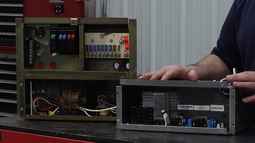
I ought to stress that not all of the solutions above apply to all RV furnace models out there. In fact, each specific brand has its own unique issues. What follows is a brief summary of more popular brands, as well as potential places users can look to for solutions.
Jayco Furnace Troubleshooting
Jayco have been on the market since the late sixties and are normally a mark of quality. However, their furnaces tend to suffer from numerous issues listed in this text. The most common issues involve igniters, lack of heat, or even furnaces not starting. Luckily, the good people at Jayco offer customer support and have an open discussion forum. Any Jayco RV owner should pay them a visit at www.jaycoowners.com.
Keystone RV Furnace Problems
There’s really no need to introduce someone as powerful as Keystone. Just like Jayco, Keystone is a subsidiary of Thor Industries, though it’s younger than Jayco by about three decades. In fact, the Keystone forums are well known for their openness in helping their customers and fellow RV enthusiasts. They can be found at www.keystoneforums.com, with hundreds of threads discussing various RV topics.
One such topic is furnace issues. The most common ones with Keystone models appear to be intermittent heating , lack of air flow and lots of clicking noises. Most of those issues are addressed in this text. In fact, most of the solutions I myself found for these issues came from the Keystone forums.
Forest River RV Furnace Problems
Forest River shares its “birth year” with Keystone, having been founded in the mid-nineties. They specialize in motorhomes, buses, pontoon boats, and cargo trailers, among other things. And just like Keystone, they maintain a lively online presence at www.forestriverforums.com.
In terms of Forest River furnaces, they usually have issues with no ignition, cold air blowing or will simply not start. A few people even reported problems with thermostats. When compared to other manufacturers, these problems don’t seem as bad. After all, a thermostat can be easily replaced with any RV model.
Suburban RV Furnace Troubleshooting
Unlike the three manufacturers before it, Suburban Manufacturing does not have a discussion forum when it comes to its RV products. This is actually an issue, considering they specialize in products related to motorhomes, especially furnaces. However, they do offer support services throughout the United States , and the locations of these service centers can be found at this link www.airxcel.com/suburban/service-support/service-locator.
Suburban RV Furnace Not Igniting
The reason I’ve mentioned the lack of forum presence of Suburban is that the issue from this subheading is a one a LOT of Suburban users complained about. However, there are solutions to it. If I were to have an ignition problem with a Suburban RV furnace, all I’d have to do is clean up the burner and check the wiring.
Duo-Therm Furnace Troubleshooting
Duo-Therm is a company that specializes in RV furnaces. As such, it’s a common topic among online communities, considering how often RVers use their products.
Most of the issues that a Duo-Therm furnace can have involve air filters, valves, debris build-up and ignition. Most of the steps outlined earlier in the text can help maintain a Duo-Therm furnace for a very long time.
Troubleshooting Atwood RV Furnace
Atwood is probably the oldest of the manufacturers listed here, having been founded in 1909. However, Dometic became the majority owner of both Atwood and Duo-Therm, so their products are largely sold under the Dometic label.
Nevertheless, they remain popular, which is why so many people want to know how to fix their Atwood RV furnaces . These issues have already been covered and include no ignition, no heat production when on, clogged venting areas and filter problems. Luckily, most service centers handle Atwood RVs, so if troubleshooting doesn’t help, professionals will.
Summing up RV Furnaces
RV propane furnace troubleshooting is but one of many topics RVers like myself tend to talk about often. However, this isn’t without reason. Maintaining the furnace must be a priority since it provides heat for everyone within the motorhome. And without proper furnace care, an RVer’s very life can be in danger.
But it’s not all doom and gloom. Proper RV furnace maintenance can provide people with warm nights, safe winter days and an overall enjoyable motorhome experience.
Related Posts
Does CarMax Buy RVs? (CarMax RV Trade-In Guide)
300 Lbs Over Payload: What Happens If I Exceed My Payload?
Thor Vegas Problems (Windshield, Battery, Fridge, Swivel Chair)
Leave a Comment:

Last updated on: February 24, 2022
RV Furnace Won’t Ignite: How to Troubleshoot the Problem
by Chris Coleman
www.rvtalk.net is reader supported. When you buy through links on our site, we may earn an affiliate commission.
It’s lovely to have a trip during the warm sunny months. However, many people love to travel on RV round the year, while some enjoy living in their home on wheels on cold nights. Cold weather requires a hot environment inside the RV to make its passengers feel cozy and comfortable. It is when a furnace comes in to play. It is impossible to think of RV journeys in cold weather without a heater or furnace. Therefore, people must know how to troubleshoot some common problems like the RV furnace won’t ignite .
The following mechanical know-how and some common sense will help the campers to identify the causes and fix them.
Inspect the Gas Line
Check the thermostat value, turn on the power switch, inspect the air filter, check for sufficient battery power, wiring issues, inspect fuses, ensure sufficient propane supply, other points to consider when rv furnace won’t ignite, final words, what to do when rv furnace won’t ignite.
There can be several reasons why the RV furnace won’t light up. So, before proceeding to diagnose the cause, you need to confirm whether the RV heater runs on electricity or propane gas.
For an electric furnace, insufficient battery power or blown out fuse is usually responsible for ignition failure. In the case of a gas furnace, a lack of propane supply or a clogged gas valve could be the reason. In any case, go through the following steps to find out the actual issue and then perform RV furnace troubleshooting.
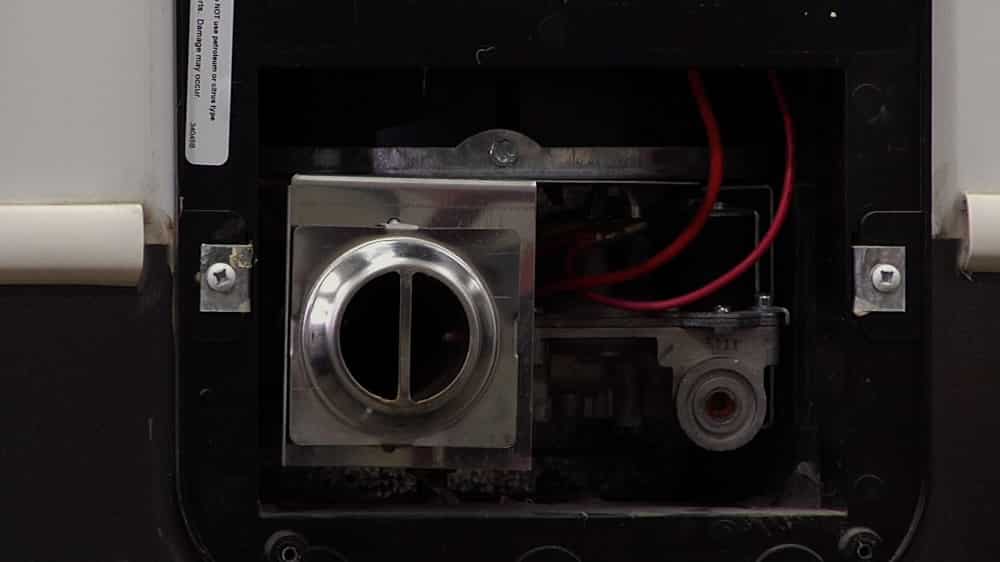
For a gas furnace, checking the shut-off valve on the furnace exterior is mandatory to confirm if the gas is on. To examine gas supply, run other appliances that derive energy from propane gas. Once you are sure about the presence of propane, it is time to see if the gas is reaching the furnace properly. Inspect if the valve is open, not containing any obstructing object inside it, and not damaged in any way.
Any of these issues will prohibit the furnace from getting enough propane. If there is a smell of gas and campers suspect a leak, immediately leave the premises and call for help.
For a furnace to work, the thermostat should have a higher value than the room temperature. So, when it is not igniting, check the thermostat. Also, one can turn on the fan so that the heater starts to release heat.
In the case of an electric furnace with a display, check if there is an error code the programmable thermostat is showing. It might give information regarding the problem.
There can also be problems with the thermostat battery. If the thermostat is not properly functioning, replacing it would be the right thing to do.
Whether the trailer furnace runs on electricity or propane, it will have a power switch. The switch must be turned on for the furnace to run, and this should also be in the checklist if the RV furnace won’t ignite .
Campers also need to check the breaker. Turn it on if the furnace power is off for any reason. If the travel trailer furnace will not light after fixing, consult a technician.
Clogged air filters and vents can also be the reason why the furnace will not ignite. Make sure if these things, along with the furnace registers, are clean. Clean the filter if there are any obstructions or blockage. If that is not possible at the personal level, call someone professional to resolve all the ventilation issues, and get sufficient airflow. If you have not replaced air vents and filters recently, it is worthwhile to consider doing that too.
Usually, an electric travel trailer furnace requires a 10.5V supply. Check the battery power by using a multimeter. They can also make use of a blower since it will run on lesser voltage. If that is unable to run, then the RV furnace does not have sufficient voltage supply.
Change the battery to get the necessary power. Purchase a new one or if it is still under warranty, contact its manufacturer for a replacement or repair.
If the batteries are delivering the right amount of power, take a look at the wiring to find damaged or loose wire. Double-check all the wires and the connectors. Replace any non-functional equipment.
There is a fuse between the DC supply and the RV furnace electric board. If it blows out, there will be a break in the battery supply, resulting in ignition failure. A blown-out fuse will release black smoke, so check out for any smoke to detect fuse issues.
An RV furnace requires an adequate propane supply to ignite. Switch on the furnace power and give it some time. Try to smell the gas near the furnace exhaust. If there is no smell, the propane gas is not available, and the refilling of gas is what you have to do next.
Propane gas filling involves risks of burns and other injuries, so one has to be careful during the refill process.
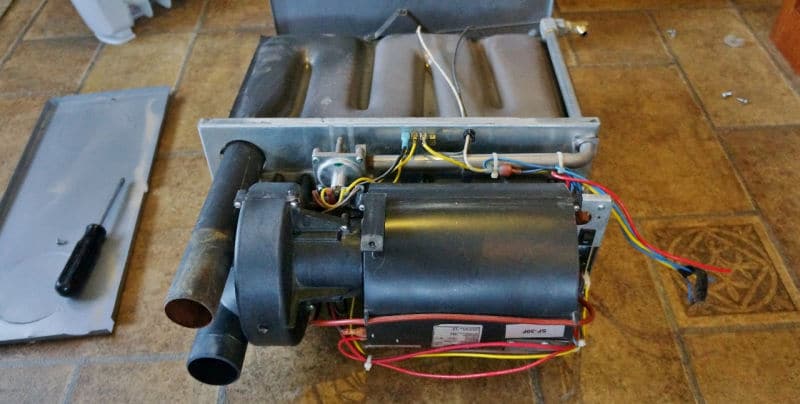
Sometimes, the circuit boards of the motorhome run and stop intermittently. Due to the heat and cold causing contraction and expansion, this intermittent behavior takes place. Thus, it can cause circuit board failure, which subsequently leads to a non-functional furnace. Finding out the exact cause of circuit board issues can be a difficult job. Hence, most people find that replacing as a quicker fix.
When the furnace becomes overheated, its electronic components can suffer from damage or burn. Such situations will lead to furnace malfunction and even make the furnace stop working. It also generates carbon monoxide in a large volume, which is harmful to the health and the environment.
A systematic approach is essential to diagnose the reasons for an RV furnace won’t ignite , so one can work on a speedy repair. In most cases, you can fix the problems by yourself. At times, the issue could be too technical for a non-professional person to handle. In that case, do not hesitate to take professional assistance.
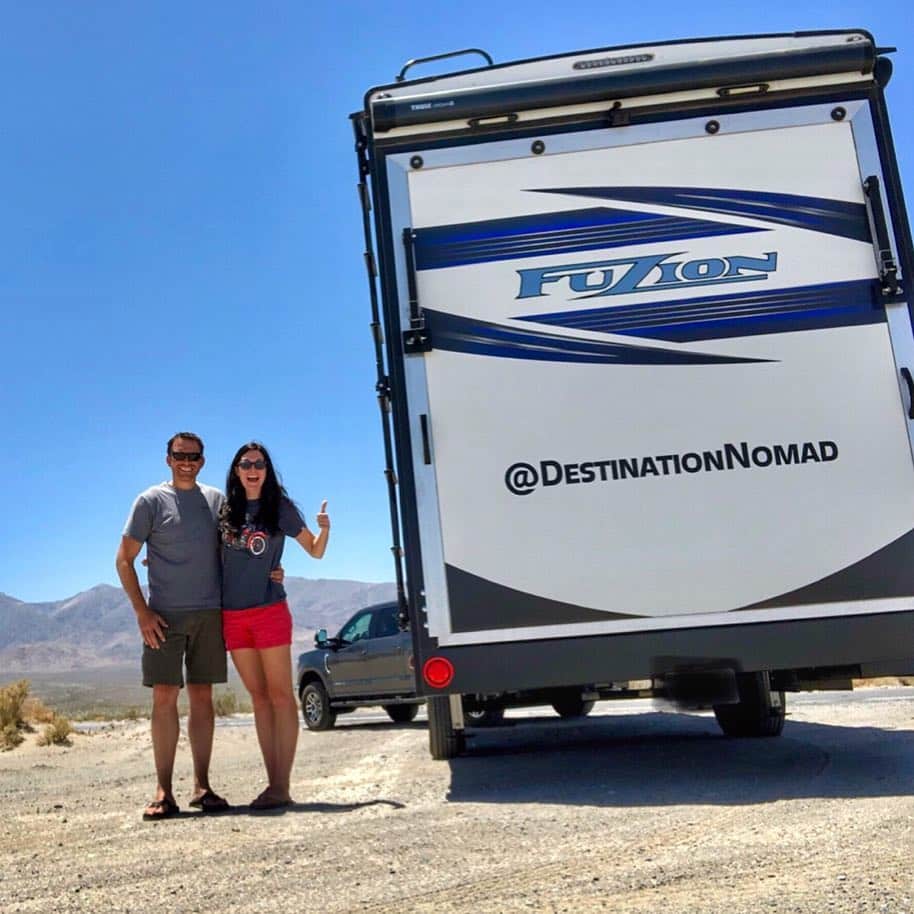
About Chris Coleman
Chris Coleman is an interesting travel blogger and outdoor photographer with a great sense of humor. He owns an RV Accessories shop in New York City so he has the knowledge necessary to provide thorough reviews and give advice on how to choose the right products for RV travel. He puts all that RV knowledge and experience to good use in his sharing posts. Besides product buying guides/reviews, Chris also writes informative articles, how-to articles and RV camping guides in his own interesting viewpoint. Chris’s blog is one of the most reliable information sources for RV campers no matter if you're an expert or a determined beginner.
Related Articles in this Category
The 7 best diesel heater for vans, campers, and rvs, rv fireplace – electric or propane, which one is the best, and how to install them, detailed explanation of how does an rv furnace work, best heaters for rvs, campers: stay warm and cozy on your rv trips, 1 thought on “rv furnace won’t ignite: how to troubleshoot the problem”.
Thankyou. i have an 1987 ford travelaire rv fan works on furnace but will not lite just blows cold air . lots of propane stove works great. any help would be great. Tks.
Leave a Comment Cancel reply
Save my name, email, and website in this browser for the next time I comment.

The Savvy Campers
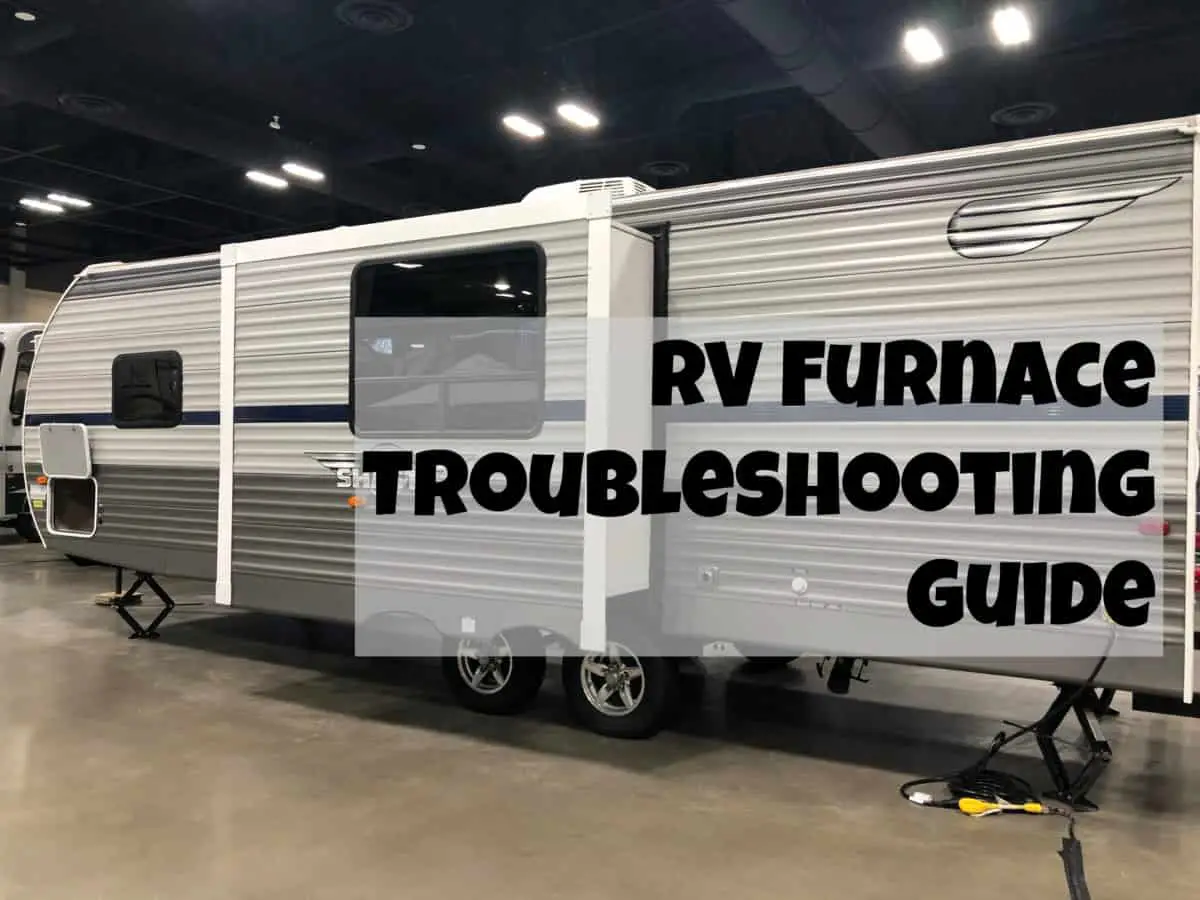
RV Furnace has no heat? RV Furnace Troubleshooting Guide
When you are out trying to enjoy a vacation in your RV, the last thing you need is for the heater to stop working. A furnace that won’t function in an RV can turn the whole RV into a portable refrigerator and have you bundling to stay warm. You won’t be able to fully enjoy your vacation if you are shivering and trying to stay warm. This article will help you to identify the problem with your RV furnace and aid you in trying to get it fixed. Ultimately, you may need a professional to work on your RV furnace, but there are steps you can take to try to DIY which will save you time and money and get you warmer, faster!
RV Furnace has no heat? Heres what to do: If your fan on your furnace is running but you have no heat, first check the fuses, breakers, battery voltage, propane tank and regulator, burner pilot light or ignitor, as well as the thermostat to make sure it is sending the heat signal.
How Does An RV Furnace Work?
An RV Furnace works off of the propane tank that fuels other functions on your RV. There will be a thermostat on the inside wall of your RV that has an on button and a dial or gauge for how warm you want to make the temperature inside the RV.
When you raise the temperature gauge, the inducer fan in the furnace will turn on. The fan takes about half a minute to run prior to lighting via a pilot light or ignitor, so the stall from the burner firing up is normal. After another half minute or so after the burners are fired, the blower motor will blow and start to circulate warm air around the RV or trailer. The burner may turn on and off while the fan is on, which is normal if the thermostat measures the set temperature.
Once the camper is up to temperature, the flame will go out and the blower motor will continue blowing for a minute or two to get the last remaining bit of heat out of the heating coils and the fan will shut off.
What Are Some Of The Common Problems With An RV Furnace?
An RV furnace that doesn’t work is a big pain, but most likely there is an easy fix for this problem. However, you have to know how to diagnose where the problem is coming from. There are several tell-tale problems that should allow you to diagnose the cause of the RV furnace not working. With the identification of a certain problem with the furnace, you can usually figure out what is needed to make the furnace start working again.
If you are experiencing a furnace that won’t heat up, but clicks, a fan that is blowing but with no heat coming out, or even a furnace that is silent and seems dead, don’t worry! There may be life still left in your furnace. All you need to do is properly diagnose the problem and follow the steps in repairing or cleaning the furnace so that you can get back to warm and comfortable traveling.
The following list is the most common RV furnace problems and how to fix them so that you can get the heat going again and stay warm.
The Order To Check The Problems Of An RV Furnace
Checking the problems for an RV furnace should follow an order to make sure that you are covering all of your bases from easiest and the most likely problem to the harder, less likely problems.
First of all, check the power supply. There should be twelve volts coming from the battery. Secondly, check the fuse. If they are blown replace them. If they are thrown, turn them back. Checking the propane is next. It might be the regulator or even the tubing. Finally, if all else fails, start to check the furnace and thermostat components such as the thermocouple and heat anticipator. If all of these options are exhausted, call a repair person to come out and make a service call.
Problem #1: Out of Propane
The first thing to check is to make sure you have propane. If you are low or simply out of propane, your furnace in your RV will not light. It will give all of the indications that it will, but at the end of the day, nothing will fire.
This will also happen if you have ran out of propane or not used it for a while. It may take 1-2 cycles of trying to light your furnace to actually start to fire to get the gas pipe full of gas again and air purged.
Always make sure to check to see if you have propane as your first option.
Problem #2: The Burner Will Not Light
You will know that the burner is not lighting on your RV furnace if you look into the device and cannot see the flame or a lack of sound is a sign. The burners typically sound like a jet from the exhaust port so you will know if it is not lit.
Most RV furnaces these days actually don’t have a pilot light, but a direct spark ignition (DSI for short). This is a part that creates a spark in order to light the incoming fuel. You will want to check to see if your DSI is working properly.
A way to test this is to turn on the furnace and look for the sparking or listen for the clicking from the ignition. If you see the sparking of the ignitor and do not see the flame ignite or it ignites for a short period of time, this is a problem. The most common reasons for the furnace not lighting, are the thermocouple position or a bad propane tank regulator.
The Thermocouple
The thermocouple AKA flame sensor is a bi-metal sensor that changes electrical resistance in the presence of heat. The control system recognizes the resistance and makes sure there is a flame keeping the gas valve open. If there is no flame detected, the gas valve will close and the flame will turn off. A faulty thermocouple will turn the flame off every time as it does not sense it even though it may be on.
If this is happening, your thermocouple may not be bad it may just not be sensing correctly. You want the thermocouple to be clean, so take fine-grit sandpaper and sand any soot that may be burned on it causing false readings before turning the furnace on.
If cleaning doesn’t solve the problem, you may have a bad thermocouple. This is a relatively inexpensive fix. Instead of testing to see if you need a new one, it may just be less trouble to buy and replace. Here is an example of a universal thermocouple that may fit your RV furnace.
Bad Propane Tank Regulator
The problem with your RV furnace may have nothing to do with the furnace components at all. You may want to check the propane regulator to see if it has gone bad. A bad propane regulator will not send enough fuel to your furnace and it won’t light correctly.
One way to check for a lousy propane regulator in an RV is to light up the gas stove. If the burners have flames that change colors, this is a good indication that the propane regulator is working. The fire should be consistent blue and not switch to yellow or red consistently. It is a great idea to have a backup propane tank regulator and hose if you will be doing a lot of cold weather or off-grid camping since much of the RV functions off of propane gas.
Problem #3: Furnace Only Blows Cold Air
If you can feel the furnace fan turn on, but the air that comes out is cold there are several solutions to get the hot air of the furnace working again. Some problems that you could identify are having a lack of airflow to the furnace or, again, a bad propane tank valve.
Lack Of Airflow
Inside of the RV furnace is an internal switch called the sail switch that registers how much airflow there is. This switch is either open or closed and doesn’t sense a variable amount of airflow. If there is a lack of airflow, the switch won’t allow the furnace to light up. So, the fan will run, but the gas valve will not open and it will not make a clicking sound to ignite.
Sail switches are installed to protect your burners from overheating. If you did not have sufficient airflow, you could overheat your burner and crack your heat exchanger causing permanent damage. These switches are cheap and are can malfunction or go bad.
If this is happening, check to make sure your vents for either return or supply air are not blocked allowing your fan to blow sufficient air.
Clicking Sound But Furnace Doesn’t Ignite
If the ignitor is working in the furnace, the problem does not probably lie in the lack of airflow. Instead, the lack of gas reaching the ignitor could be the issue. You may want to check the propane valve to see if it has gone bad. Also, the thermocouple could also be positioned so that the spark is not reaching the gas coming from the valve.
The factory manual for your furnace will show you the proper gap for your spark to provide the best spark for ignition. Think of a DSI (direct spark ignition) as a big spark plug. Also if the unit was jarred from rough roads, you may need to reposition.
Problem #4: The Fan Does Not Blow Air And There Is No Heat
If there is no fan noise coming from your RV furnace, it may be dead because of a lack of power. However, you won’t have much to go on since there aren’t any components working on the furnace for you to diagnose. You will need to check the battery, check the circuit breaker, and check the fuse for the fan.
There is also a time limit on most furnaces that it will not fire for a predetermined amount of time to avoid short-cycling. This may be a period of 5 minutes, so if you just had it on and now it’s not firing, wait and try it.
Check The Battery
We’ve all done it. The battery on the RV is dead, and now nothing works. However, there may still be enough power to the RV for lighting or other items yet not enough juice for the furnace. If you can check the battery power, see if it has 12 volts coming from it. If it does, the problem is elsewhere.
Check The Circuit Breaker
The next thing you want to check is the circuit breaker. If you tripped the circuit breaker, all you have to do is go to the power panel and reset the circuit.
Check The Fan Fuse
The last thing you may want to check if the battery has juice and the circuit is fine is the fuse for the fan. You should always have replacement fuses for all of the electronics in your RV ready to go as we mention in our article on the top tools to bring in your RV . Simply pop out the blown fuse, which will probably be darker in color or burnt looking, and insert the new fuse. This should fix the problem.
Problem #5: The Fan Will Not Turn On and it was Just Working or it is not Heating to the Proper Degree
If the fan doesn’t turn on, there is possibly a problem with the thermostat. Check the battery is supplying 12 volts first. Then, check to see if you shorted or blew a fuse. If all the electricity components are properly working, you will need to check the thermostat.
What Is The Heat Anticipator?
The thermostat has a precision components in it called a heat anticipator . Basically, the anticipator allows the thermostat to be more or less sensitive. If the temperature of your RV space is around the set degree, it will shut the furnace off.
By changing your anticipator, you change the time in which the furnace will turn back on. If you have your anticipator set to low, it will turn your furnace on and off whenever the temperature of the RV changes by only a small amount would damage the furnace.
How To Check And Adjust The Heat Anticipator On An RV Thermostat?
If you have an analog thermostat, there is manual settings to change. If you have a digital thermostat, you should be able to change within your thermostat’s programming.
On an analog thermostat, the heat anticipator is located under the outer cover and is a metal disk in the thermostat. You have to remove the cover plate of the thermostat to access the heat anticipator. A sliding contact will run over a wire to change the settings.
On the wheel you will see a pointer of some kind that has a little opening in it. This opening reveals the exact setting in amps. It is these amp readings on a silver colored scale that you need to adjust. Read on to find out how.
Adjusting The Heat Anticipator Scale For An RV Thermostat
The average anticipator scale typically ranges from .10 to 1.2 amps. By tuning the heat anticipator to a higher or lower amperage you are setting the thermostat to be more or less sensitive to heat. You will want to consult your manual for your exact settings.
The lower numbers on the amp scale will make it so that the heat will run for a shorter time. This is because it takes less heat in the room for the heat anticipator to tell the furnace to shut off.
Moving the pointer to higher numbers on the scale will make it so that the heat is run for a longer time. This is because it will take more heat in the room for the heat anticipator to tell the furnace to shut off.
Moving the heat anticipator scale should not be messed with unless it is the last resort. Only if this is the last option should you change what the installer set the scale at when the furnace was originally installed.
The design of an RV is not great for cold weather. You are basically in a shell like a refrigerator, so the heat that you build up in the RV goes away quickly. If you are in cold weather, you need to have a heater that works to keep you comfortable and safe during your getaway or vacation.
Remember to always have manuals as well as parts for your equipment before you leave for a trip so that you can do small repairs on vital equipment, like your furnace, while on the road. These replacement parts include fuses, propane tank hookups, and actual parts like the thermocouple.
If you follow these steps to check the symptoms and diagnose your RV furnace, you should be able to make the repair yourself. If you cannot fix the furnace on your own, you will have to make a call to a licensed repair person to come out to your RV and make a service call. Good luck getting warm again!
Be the first to be notified about FREE tips, hints, coupon codes, and email-exclusive information. All for FREE!
Related Posts:
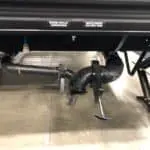
Similar Posts
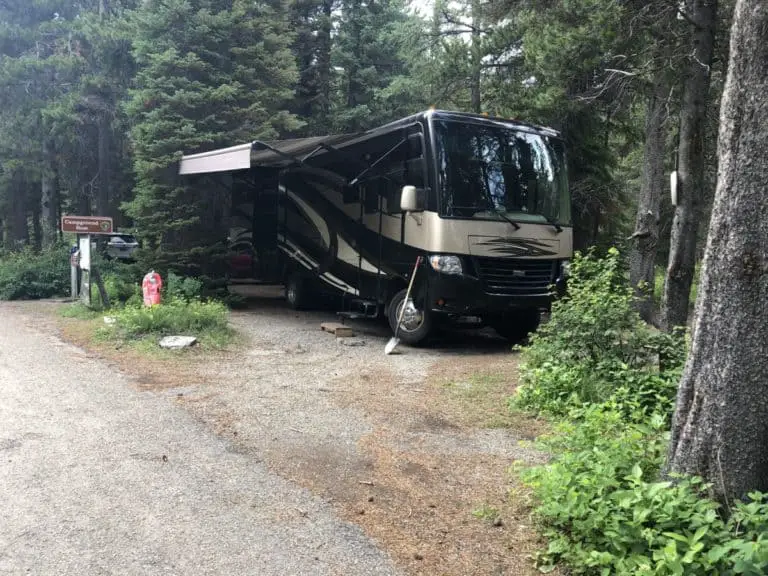
19 Reasons why a Class A RV is better than a Class C
When choosing a RV to buy you have several choices, Class A, Class B, Class C, Travel Trailer, 5th Wheel, Toy Hauler, Pop up Camper, etc… but there are three that are similar in which have a motor and are not towed. Class A, B, and C. Class B is typically a smaller retrofitted van…
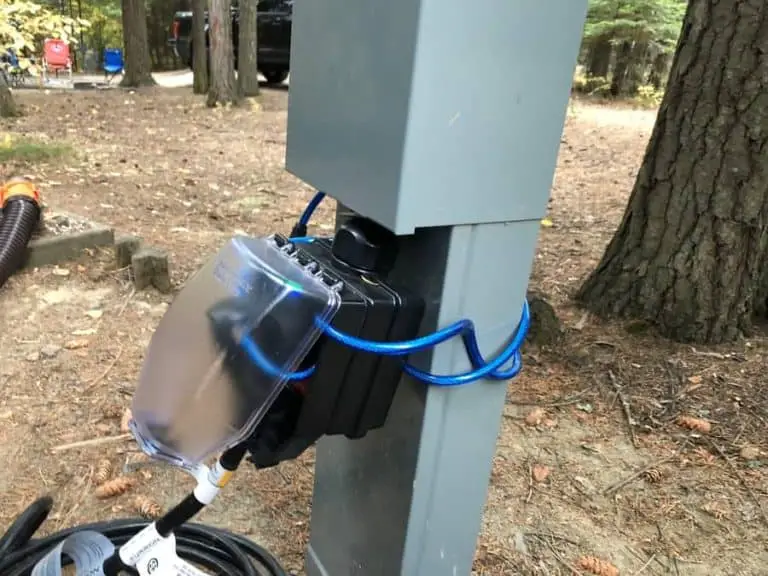
What is the difference between a 30 amp and 50 amp RV?
A 30 and 50 amp system both have the same purpose, to power the RV. However, they are very different and are used in different types of RVs. What is the difference between a 30 amp and 50 amp RV? The difference between 30 amps and 50 amps is how many items you can run…
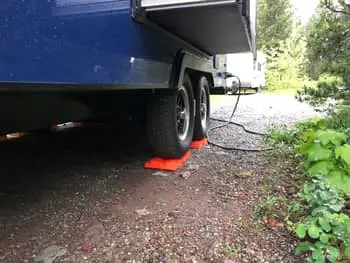
How do I Level a Travel Trailer? 10 Simple Steps Explained
The first thing you need to do when you get to a campsite is level your RV. Leveling can be easy for some, but can also be difficult depending on the situation. I have broke down the process into some easy steps. How do I level a travel trailer? To level a travel trailer, you…
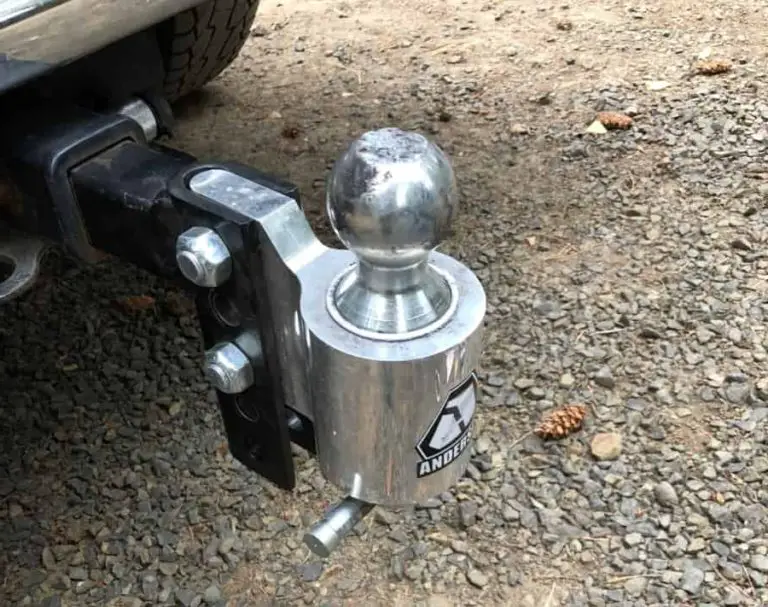
Can You Use a Hitch Extender With a Weight Distribution Hitch?
If you’re towing a trailer or RV with a truck that has a traditional rear or bottom hitch, you usually won’t have to worry about needing a hitch extender. However, if you have a car or SUV with a bottom-mounted hitch, an extender might be necessary. This is especially the case when the ball hitch…
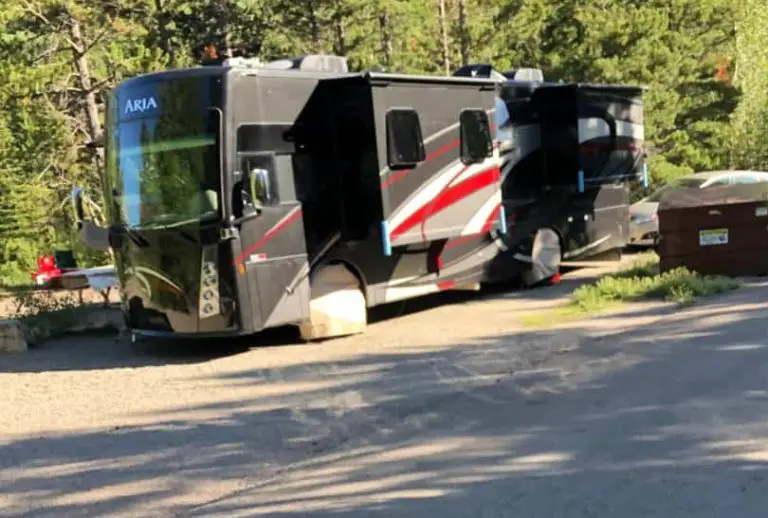
How to Skirt Your RV in the Winter and Why You Need it?
Everyone is familiar with the concept of winterizing things such as vehicles and boats. However, you may be wondering what exactly you need to do to keep your RV warm and protected during the winter months. Skirting your RV is a method that will not only help you stay warm inside your RV, but it…
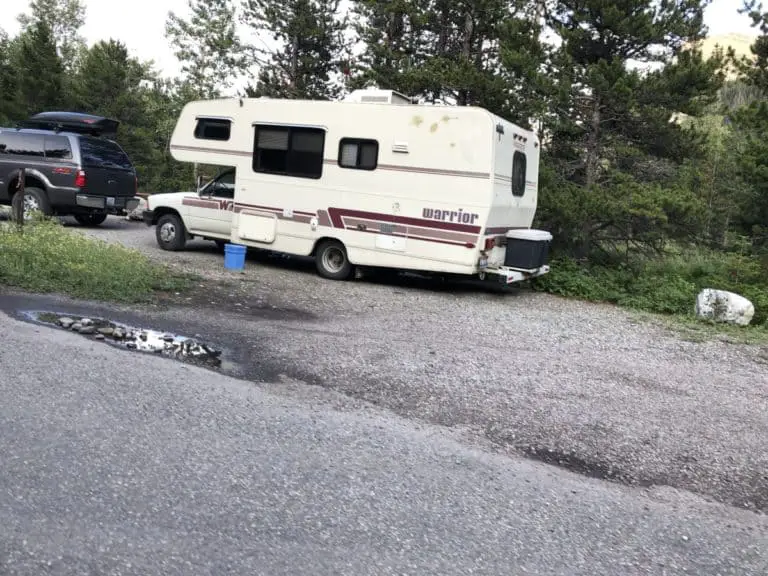
7 Ways to Get Rid of an Old RV or Motorhome
So you’ve decided the time has come to get rid of your old RV or Motorhome. Whether you’ve decided to upgrade to a new model or you simply no longer need your vehicle, you’ll want to consider your options for the best ways to dispose of it. No one wants an unused RV or motorhome…
Join our Newsletter to stay up to date on the latest RV topics and receive our FREE RV Inspection Cheat Sheet Today. Use this tool to inspect new or used campers you are looking at purchasing.
No thanks, I’m not interested!


IMAGES
VIDEO
COMMENTS
Do you have an RV furnace that is blowing cold air, won't ignite, won't turn on, or won't stay lit? Trust us, we've been there. This is a step-by-step troubl...
Step 2: Check the battery voltage and connections. If your battery is weak or dead, your furnace won't be able to ignite or stay lit. You can check the battery voltage by using a multimeter or a voltmeter. The ideal voltage for most RV furnaces is between 10.5 and 13.5 volts DC.
This article intends to aid you in the procedure. There may be one or more of the following causes for your furnace's failure to light: 1. Issues with the propane tank. 2. Issues with the propane line. 3. A burned-out thermocouple and pilot light. 4.
Lack of Propane. One of the most common causes of an RV furnace clicking but not lighting is a lack of propane. Propane is the fuel that powers the furnace, and if the propane tank is empty or low, the furnace won't ignite. Check your propane tank to make sure it's not empty, and if it's low, refill it.
Let's quickly look at the common causes and how to troubleshoot them: 1. Check the Power Button. RV furnaces powered by electricity or a propane supply will both have a power switch. Therefore, when experiencing issues with my furnace, the first step I take is to ensure this power button is switched on.
Returned home to no propane and 40 degrees in the camper. I got the tank refilled and after several tries got the furnace to light and run. It ran quite a long time warming up the camper and cycled off. After the first time it ran the furnace tries to kick on, I can hear the clicking and the initial whoosh of propane lighting, but it won't stay ...
READ ↘ The NON ELECTRIC heater valve is very adaptable, the Robert Shaw https://amzn.to/2CHyFyp 710-205 Hydraulic Snap Action Gas Valve & 710-502 Low Profile...
RV furnaces have sensors in them that will shut off the furnace if there isn't enough airflow, it stops the furnace from overheating or something like that. For some reason taking off that outer metal cover and keeping the inside floor vents open and unobstructed has fixed the problem. The furnace hasn't turned off prematurely since.
Once all this is done, make sure the power switch is turned to the on position. If it isn't, the furnace will not light. This switch can be found inside the door on the door models and the outside of the furnace in non-door models. Then set the thermostat temperature to the desired level and your furnace should light.
Make sure that it's set to "Heat" or "Furnace.". Next—remember that the thermostat operates from the 12-volt DC coach battery—ensure that your battery is fully charged and then check the 12-volt fuse panel to make sure the furnace fuse isn't blown.
Why your RV furnace isn't working. 1. Low voltage. Low house batteries may initially have enough power to spin the blower motor fast enough to engage the sail switch, but after running a few minutes, the voltage may drop, slowing the fan speed and in turn allowing the sail switch to open. When the sail switch opens, the gas valve will shut ...
The internal furnace switch wont let the furnace ignite resulting in less heat. So, you will have the fan running but thee wont be any heat or less heat. 10. RV furnace clicks but won't start. The furnace may make a click sound but it wont start. This happens when the spark igniter try's to ignite the pilot light but fails.
4. Sail Switch. The RV sail switch is a simple switch, like a light switch, that, once engaged, sends a signal to the propane valve to open. If the switch doesn't engage, it won't send that signal; therefore, your furnace can't ignite. Next, the RV furnace blower fan engages the sail switch.
I was hoping for some help troubleshooting my furnace. It is an Atwood Mobile model 8531-IV-DCLP in a 2004 Jayco Greyhawk. The furnace spins the fan as normal and then lights as it should. It burns for about 10 seconds and goes out. It relights and burns for another 10 seconds and goes out and then relights a 3rd time burns for 10 seconds or so ...
1. First Blower turns on for a minute or so. * Purge Cycle. 2. Igniter lights and furnace begins to heat. * Flame Ignites/proves it lit or it would shutdown within 6-7 seconds. 3. Within less than a minute the furnace shuts down. * Heating then tripping.
The pattern on a properly functioning RV furnace should be (1) blower fan comes on for as much as 30 seconds (allowing the electronics to confirm good air flow), (2) clicking of the ignitor, (3) WHOOSH/RUMBLE of the burner igniting, and then (4) AHHHHHHhhhhhhhh as the warm air starts flowing! 😉.
Join Date: Jan 2022. Posts: 4. Suburban Furnace Won't Stay Lit. I have a Suburban NT-20SEQ furnace that acts as follows: 1 - fan comes on when thermostat calls for heat. 2 - igniter fires, lights burner, burner stays on for about 5-6 sec (igniter continues to spark when burner is on) 3 - burner turns off, and cycle repeats 3 times then locked out.
Code 31: This code indicates a problem with the air flow. It could be caused by a dirty air filter, a blocked air intake, or a faulty blower motor. Code 32: This code indicates a problem with the furnace's ignition system. It could be caused by a dirty or faulty electrode, a weak spark, or a problem with the gas valve.
RV Furnace Blower Comes on but Won't Ignite. Another common issue is when the blower begins to blow, but the furnace still isn't igniting. Normally, this is an electrical issue. If it happens to be low power, I merely replace the battery with a one that has the right voltage. This usually solves the problem.
Turn on the Power Switch. Whether the trailer furnace runs on electricity or propane, it will have a power switch. The switch must be turned on for the furnace to run, and this should also be in the checklist if the RV furnace won't ignite. Campers also need to check the breaker. Turn it on if the furnace power is off for any reason.
It does that three times. In the Atwood trouble shooting guide, low gas pressure is the first cause listed for this. I have full propane tanks, a new gas regulator and new high pressure hoses, and have measured the pressure at the furnace inlet connection with a manometer at 11" water column (WC). There is a 1/8" NPT plug on the gas valve "for ...
Problem #3: Furnace Only Blows Cold Air. If you can feel the furnace fan turn on, but the air that comes out is cold there are several solutions to get the hot air of the furnace working again. Some problems that you could identify are having a lack of airflow to the furnace or, again, a bad propane tank valve.
Step 1. Make sure you have a heater designed for a pilot light. Most modern travel trailers have an RV furnace heater that has an instant spark ignition. If you are looking for a pilot light and don't see one, you may just have a newer RV furnace heater model. Step 2. Check the thermocouple position next to the burner